

Electronic Field Trip to the Post Office
With a quick stick of a stamp, we’re off to see what happens to the mail once it leaves your mailbox. In this eight-minute electronic field trip for the primary grades, students meet a postal carrier, watch mail zip through the sorting machines at the post office, and learn about the different ways mail is delivered to different destinations by many different people.
By highlighting the role mail plays in our daily lives, this KET video field trip also reinforces the critical importance of communication in the functioning of a community and underscores the need for strong reading and writing skills. These web pages include ideas for building on these themes and tying the field trip to topics in language arts and social studies.
Grade Levels: 0-3 Resource Types: Video and Handouts
Behind-the-scenes visits with U.S. Postal Service personnel show how letters get from mailbox to post office to mailbox. This short film for students in the primary grades also emphasizes reading and writing skills and the importance of communication in our lives.
↑ Top
Pre-Viewing Activity
One week before the post office lesson, send each student in your class a postcard about what they are going to see. Below is some suggested text:
Dear ________________, We are beginning our study of the U.S. Postal Service. Did you ever wonder what is behind the wall at the post office? Soon we will see a video that takes us behind that wall. We will find out what happens to your letter after you mail it. You will see mail on its amazing journey, with machines marking, postal workers sorting, and mail carriers making their deliveries. Sincerely, ________________
Once the students have received their postcards …
- Do you like receiving mail?
- What do you already know about the Postal Service?
- What questions do you have? (Write students’ questions on chart paper and post the list in the classroom.)
- Teach students the correct form for writing a friendly letter.
- Teach students the correct form for addressing an envelope. Remind them that adding the ZIP code helps mail move faster.
- Look at the postmark. What information does it give? (date, place, ZIP code, where and when the letter was sent)
- Find the stamp. Where is it located on the envelope? Take a look at the cancellation mark. Why does the post office cancel stamps?
- Locate the return address. Why is it important for a letter to have a return address?
- Look at the very bottom of the envelope. Is there a bar code there? (The bar code is a shorthand way of representing the ZIP code; it makes it easier for post office machines to sort letters.)
After Viewing
After viewing the video use the classroom activities to enrich and reinforce the learning experience.
Vocabulary Activity
Duplicate several copies of the Postal Service Glossary. (A special printer-friendly version of the glossary has been provided for this activity.) Cut apart the vocabulary words and definitions and put each set of words in a plastic baggie. Make an overhead transparency of the glossary page to use as a reference.
Reinforce the Postal Service vocabulary by having students work in groups of four to match words to their definitions. Have students tape or glue their words and definitions to construction paper.
Ask the student groups to check their work using the overhead transparency of the glossary page.
Discuss the students’ responses.
Fun with Stamps
Stamp collecting is one of the most popular hobbies in the world. Collectors of new or used stamps sometimes gather stamps by country or by theme. Stamp collecting is called philately (fill-AT-e-ly). Two websites with lots of information for beginning stamp collectors are:
- American Philatelic Society
- About Stamp Collecting from the United States Postal Service [click on “Buy Stamps and Shop.”]
Following are some classroom activities involving stamps.
Sort and Classify
Have students, parents, and other teachers save all of their cancelled stamps for several weeks. Cut them off the envelopes. Give each group of 4-5 students a pile of stamps to sort and classify according to an attribute of their choice (for example: living vs. non-living; a theme such as buildings, animals, or flowers; color; shape; cost). Remind students that every stamp they are given needs to be included.
Next, have students from another group analyze and guess the criteria used for the classification system of the stamps they are observing. Finally, have students make a chart showing the categories in their classification systems, then glue or tape stamps in the appropriate places on the chart.
Some students may want to start their own stamp collections. Have them soak used stamps for 10 minutes in warm water, then carefully separate the stamps from the envelope corners. Students may keep their stamps in ziplock bags or attach them by subject or cost in a notebook. They may want to collect stamps with a theme, such as buildings, famous people, animals, plants, or events in U.S. history.
More than 19 billion stamps were sold in the U.S. in 2014. Laid end to end, they would stretch around Earth 12 times!
MONEY: In early America, the cost of sending a letter depended on how far it traveled. Today, the cost of sending a letter depends on its weight. Use the Postal Service’s online Simplified Domestic Rates and Fees chart to calculate how much it would cost to mail letters weighing 2 oz., 5 oz., 10 oz., and 1/2 oz.
ARRAYS: You are given 12 rectangular stamps. What are all of the ways you can arrange them on a large envelope? (a strip 12 stamps long, two rows of 6 stamps each, 3X4, 4X3, 6X2, 1X12)
PROBLEM SOLVING WITH ADDITION: Stamps cost 2 cents, 3 cents, 5 cents, or 8 cents each. Emily wants to mail a letter needing 40 cents’ worth of stamps. What combinations of stamps could she buy to mail this letter?
GEOMETRY AND MEASUREMENT: Sam has a rectangular stamp that is 2 centimeters wide and 3 centimeters long. What is the perimeter of his stamp?
MULTIPLICATION: Adam bought a sheet of stamps with 5 stamps across each row and 6 down each column. How many stamps were on the sheet?
Design a Stamp
After taking a look at a variety of cancelled stamps, ask students which ones they like best and why. Talk about the subjects on the stamps. Let students know that artists and other people with creative ideas often design stamps, and now they will have the opportunity to design their own stamp.
Using letter-size copy paper as their template (turned landscape or portrait as needed), students should sketch their designs, then use crayons or colored pencils to add color. Students may share their stamp designs with the class or collaborate to make a display for the hallway or bulletin board.
Cards and Letters
Postcard Collecting
The parts of a picture postcard include a picture on the front and a description of the picture on the back, along with a place for your message on the left and the address on the right. People often like to send greetings from their vacations by way of postcards.
COLLECTION: Some students might be interested in collecting used (cancelled) postcards from various parts of the state or country. As with stamp collecting, they may want to collect according to a theme.
CREATE: Give students a 3X5 index card as a postcard template. Think of the interesting features of your community. Does it have important or beautiful buildings? Parks? Historical sites? Have students create their own picture postcard using colored pencils or crayons. Divide the space on the blank side in half and write a message to a friend or relative on the left side. Add your name and address on the right side, put on a stamp, and mail your card.
Letter Writing
The earliest known letter was a clay tablet in Babylonia 4,000 years ago!
THANK-YOU LETTERS: After teaching the correct format for friendly letters, have each student write a letter of thanks to someone in the school. Appoint classroom postal carriers to deliver the letters.
PEN PALS: Capitalizing on children’s love of receiving mail, this project involves two classes writing and exchanging letters. First, find a teaching colleague at the same grade level in another school who is willing to share in the project. Then teach your students the correct format for writing friendly letters. You will find that students’ voices come through very clearly in letter writing, especially in letters written over time and to an authentic audience.
Assign a topic for each exchange:
- a description of me and what I like
- my school and our school day
- my favorite books and why I like them
- games I like
- jobs I do at home
- my community (if the pen pals live in another community)
- my favorite subject at school
Understanding alternative perspectives and frames of reference is an important part of this project. Students might also enjoy creating and exchanging class “artifact boxes” containing items that tell about their school and community.
Social Studies Connections
Using our History of the U.S. Postal Service Timeline as a reference, create a timeline in the classroom and have students arrange individual events in the correct order. (You may want to use Timeliner software.)
The Pony Express delivered the mail through the Wild West beginning in 1848. Riders took eight days to travel the nearly 2,000-mile trail. Using books, Cobblestone magazine, and the U.S. Postal Service web site , have students research the Pony Express.
Creative Thinking
At various times and places in America, hot-air balloons, camels, dogsleds, ponies, reindeer, trains, stagecoaches, homing pigeons, steamboats, mules, airplanes, ships, rockets, cars, buses, trucks, and snowmobiles have delivered mail. How do you predict mail will be delivered in the future? Draw a picture of mail being delivered in this way.
Challenge Research
Ask students to use various research tools to find the connection between each of these important people and the U.S. Postal Service:
- George Washington
- Benjamin Franklin
- Abraham Lincoln
- Harry Truman
(George Washington, our first president, wrote the first airmail letter. It traveled by balloon. Benjamin Franklin was the first U.S. postmaster general—the government official who heads the Postal Service. His picture was on the first U.S. postage stamp, and he was known as the “Father of the U.S. Postal Service.” Two U.S. postmasters general have gone on to serve as president: Abraham Lincoln and Harry Truman.)
Open Response
P-2/3 prompt.
Postal workers are community helpers.
- Draw a picture of a postal worker on the job.
- Explain how the postal worker is helping in the community.
Scoring Guide:
- Student responds to both parts of the task and accurately and completely communicates an understanding of the work of the postal worker depicted in the drawing. Examples might be mail carrier (delivers the mail so that we can get letters, bills, and packages), mail sorter (sorts mail so that it can be delivered to the correct address), or postal clerk (weighs mail, sells stamps to pay for sending the mail).
- Student responds to both parts of the task and communicates clearly. The response may contain minor errors.
- Student responds to only one part of the task.
- Student’s response shows minimal understanding of the work of postal workers in the community.
Community helpers such as postal workers provide services to meet some needs and wants in our society.
- Identify two needs and/or wants met by postal workers as they serve our community.
- Describe each and explain how this service is important to our society.
- The response is complete and shows a strong understanding of the work of postal workers in helping members of our community to communicate. Examples of mail for communication might be letters to friends, business mail (advertising or bills), cards for special occasions, postcards to tell others about our travels, packages (gifts), or magazines. Postal workers may also provide help in emergencies.
- The response shows an understanding of ways in which postal workers provide for needs and wants in the community, but the response contains minor errors or misconceptions.
- The response shows a limited understanding and/or gives only one example of the ways in which postal workers provide for needs and wants in the community.
- The response shows a minimal understanding of the ways in which postal workers provide for needs and wants in the community.
Use these additional resources to expand the learning experience.
A special printer-friendly version of the glossary has also been provided.
address – the number, street, city, and ZIP code on a letter that tell postal workers where to deliver it
bar code – tiny black lines representing the numbers in the ZIP code, found on the bottom of some envelopes
collection box – a large blue metal box where people place letters to be sent. Postal workers collect this mail at regularly scheduled times.
facer-canceller – a machine that turns letters so they are all facing the same way, prints postmarks, and cancels the stamps on each envelope
hamper – a canvas basket used to collect and sort mail
mail – letters, postcards, ads, magazines, and packages delivered to a certain address
mail clerk – a postal worker who sorts mail, sells stamps, and weighs packages
postage stamp – a rectangular sticker that you attach to the upper right corner of an envelope to pay for sending the letter. Stamps cost different prices because some mail costs more to send. There are interesting pictures on some stamps, which many collectors like to save.
postal scales – a machine clerks use to weigh mail to find out how much it will cost to send
postcard – a rectangular piece of heavy paper that can be mailed without an envelope. Postcards are usually smaller than a letter-size piece of paper (3″ X 5″ and 4″ X 6″ are common sizes) and less expensive to mail than letters.
postmark – a round circle to the left of the stamp showing when and where the letter was mailed
post office – a U.S. government building where mail is sorted and stamps are sold. Most post offices have an American flag out front.
route – the streets or roads where a particular letter carrier delivers the mail every day
rural mail carriers – postal workers who deliver mail in the country. They drive their own cars and put mail into mailboxes along the road.
sectional distribution center – a large Postal Service building where mail is sorted for smaller post offices
uniform – special clothes worn by workers who do a particular job, members of a team, or other groups of people. Letter carriers and postal clerks wear blue uniforms.
ZIP (Zone Improvement Program) code – numbers representing a location for mail delivery. The first three numbers indicate the section of the country and state; the next two numbers indicate which post office serves the delivery address.
1639 First post office in America opened in Boston, Massachusetts. 1775 Benjamin Franklin named the first U.S. postmaster general. 1788 The Constitution gives Congress the right to establish post offices and post roads. The first postal rates are set. The cost for sending a letter to a destination within 450 miles is 25¢. 1832 First delivery of mail by railroad. 1847 The first postage stamps are printed: 5¢ for a Ben Franklin and 10¢ for a George Washington. 1860 The Pony Express begins carrying mail across the West. 1863 New postage rates are introduced, based on weight instead of distance. 1896 Rural Free Delivery begins. People living in rural areas no longer have to travel to a post office to pick up their mail. 1912 Parcel Post (package delivery) begins. 1950 Automatic letter sorters and facer-cancellers introduced. 1963 ZIP (Zoning Improvement Plan) codes are introduced. Before this innovation, each complete address had to be read during sorting. 1983 First barcodes printed on envelopes for more efficient mail sorting. 1993 National Postal Museum opens in Washington, DC.
Further Reading
Here are some books about letters, mail, and the postal service for primary students:
Ahlberg, Janet and Allen: The Jolly Postman and Other People’s Letters
Asch, F. and V. Vagin: Dear Brother
Bolick, Nancy. Mail Call! The History of the U.S. Postal Service
Bourgeois, Paulette and Kim LaFave: In My Neighborhood: Postal Workers
Brisson, Pat: Your Best Friend
Caseley, Judith: Dear Annie
Flanagan, Alice: Letter Carriers
Gibbons, Gail: The Post Office Book: Mail and How It Moves
Greene, Carol: At the Post Office
Harness, Cheryl: They’re Off! The Story of the Pony Express
Hedderwick, Mairi: Katie Morag Delivers the Mail
James, Simon: Dear Mr. Blueberry
Johnson, Jean: Postal Workers A to Z
Kroll, Steven: Pony Express!
Marshak, Samuel: Hail to Mail
Ready, Dee: Mail Carriers
Roth, Harold: First Class! The Postal System in Action
Rylant, Cynthia: Mr. Griggs’ Work
Skurzynski, Gloria: Here Comes the Mail
Williams, Vera: Stringbean’s Trip to the Shining Sea (postcards)
Ziegler, Sandra: A Visit to the Post Office
See more resources for:
See more resources about:.
Tours and Itineraries
- 20-Minute Itinerary Self-guided Tour
- 1-Hour Itinerary Self-guided Tour
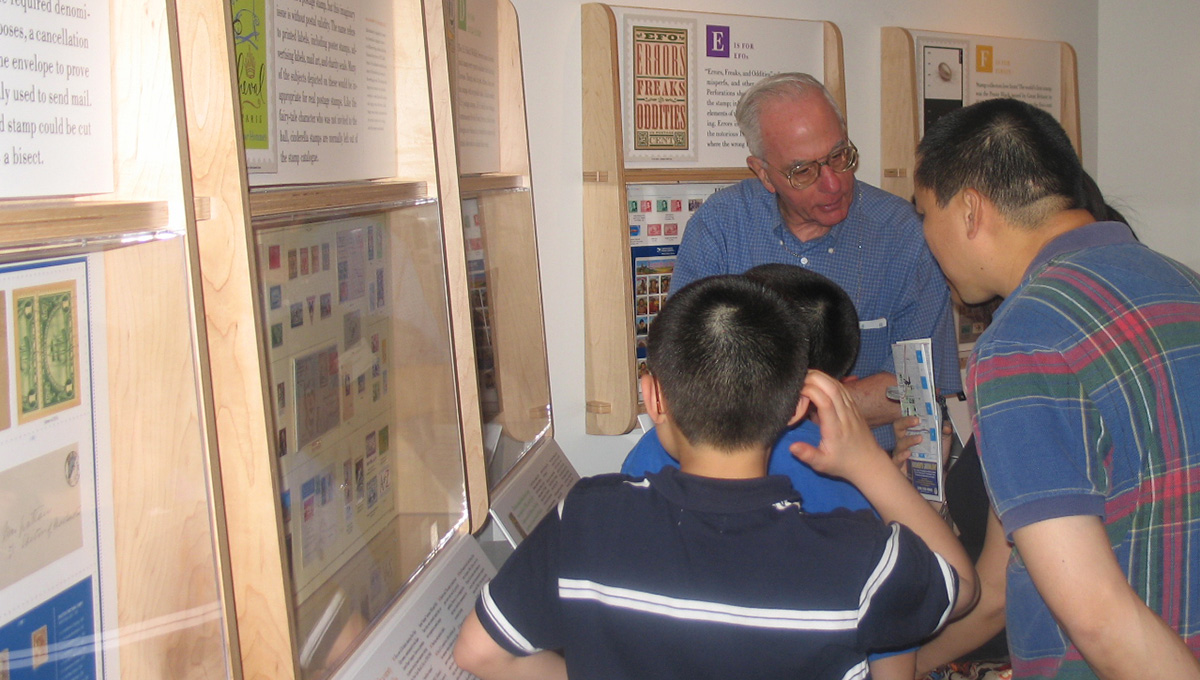
Docent-led tours are an excellent way to see the highlights of the National Postal Museum. The museum has regular free tours for visitors, though groups of 10 or more visitors need to schedule in advance to guarantee availability. Self-guided tours, school field trips , and guided tours for walk-in visitors are also available.
Sign language, oral interpreters, assisted listening devices, and descriptive guide experiences for the visually impaired may be requested with advance notice for tours and events. One week advance notice is recommended, but not required. Email: [email protected] to make arrangements.
Group Tours
Groups of 10 or more visitors planning to attend a Museum Highlights Tour need to schedule their tours in advance. Email: [email protected] at least three weeks in advance to make reservations for your guided group tour. Highlights Tours may be scheduled at 11:30 a.m. These tours are approximately an hour long and are not recommended for school groups.
Drop-in Tours
An introductory tour of the Museum is offered to walk-in visitors at 11:30 a.m. (based on docent availability). These tours meet at the Museum’s information desk and last approximately 45 minutes. Please check the museum Calendar of Events to confirm dates and times.
Keep an eye out for our friendly docents spotlighting in the galleries throughout the day.
Self-guided Tours
Self-guided groups may visit the Museum any time during regular hours. North Capitol Street Entrance via US Post Office .--> Brochures, including a map of the Museum galleries, and information about highlights of the Museum's exhibitions, are available at the Information Desk and in a kiosk at the bottom of the escalators. A copy of the museum's floor plan can be found at the bottom of this page.
More information about self-guided tours for student groups is included in the School Field Trips section of this website.
Self-guided Tour
Stop #1 (Museum Level 2, William H. Gross Stamp Gallery)
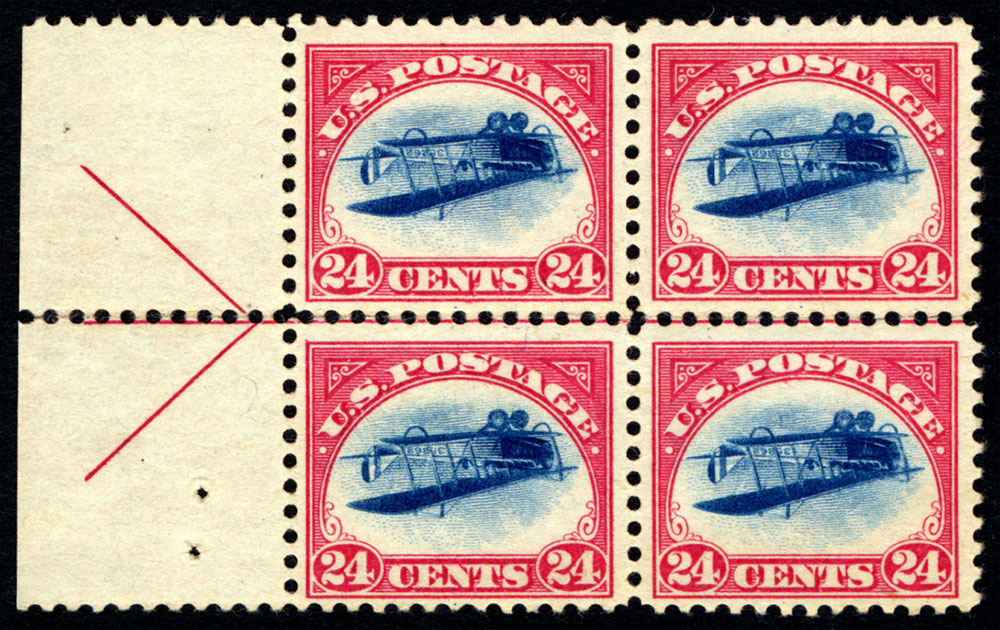
Inverted Jenny
24c Curtiss Jenny invert block of four, 1918
Go into the William H. Gross Stamp Gallery and find the “Gems of American Philately” exhibit. There, you will see four “Inverted Jenny” stamps, still together in what we call a “block of four.” This rarity is treasured by stamp collectors so much that it is the equivalent of the Louvre’s Mona Lisa.
Take a close look. Just like a work of art, the beauty is in the details. But with a rare stamp, the beauty is also in its flaws. To understand how this mistake happened (plane printed upside down), watch the film in the theater behind you or visit the Spider Press adjacent to the exhibit.
Spider Press video »
Stop #2 (Museum Level 2, William H. Gross Stamp Gallery)
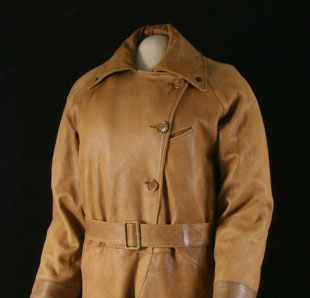
Amelia Earhart’s Flight Suit
This famous female pilot broke flying records in the air, and while on the ground she shared her stamp and cover collection. You can see relics from both parts of her life displayed here, on the touch screen interactive and in the adjacent cases.
The flight suit kept her warm and safe on her adventures. She helped raise funds for such adventures through the sale of the letter she carried. The envelopes with special cancels, carried aboard those flights, instantly created a collectable desired by stamp experts. They pre-paid for the envelopes flown aboard her plane which she would postmark with the dates of the flight.
Stop #3 (Museum Level 2, Historic Lobby)
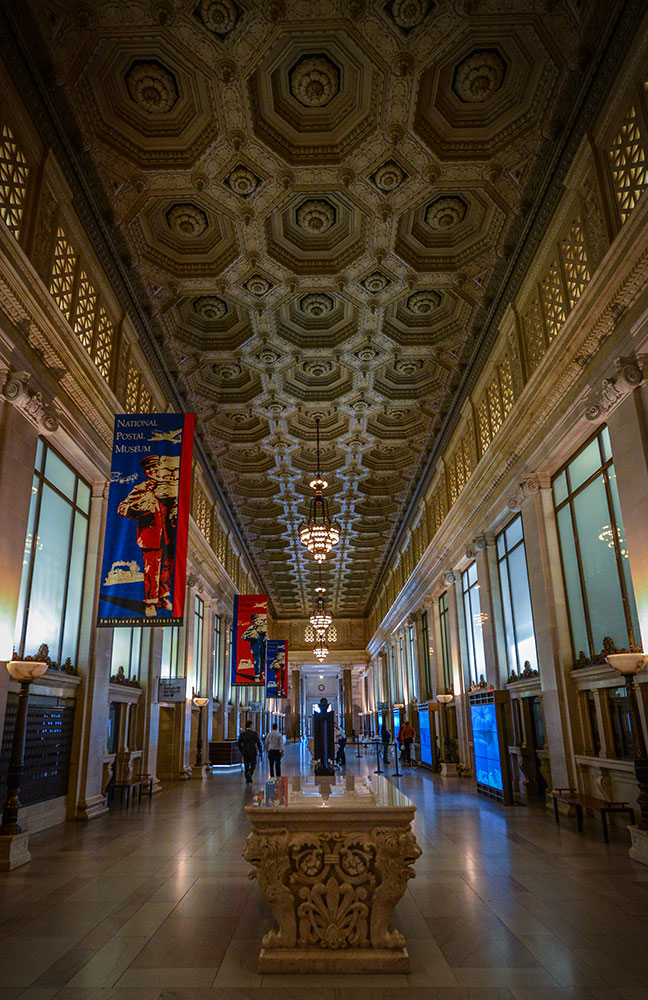
Historic Lobby Ceiling
As you transition from upstairs to downstairs, pause to look up at the ceiling in the Historic Lobby. This building was constructed as a companion to Union Station by the same architect, Daniel H. Burnham. The hexagonal shapes in this ceiling echo the shapes in the Union Station ceiling. Both are of the Beaux-Arts style, promoting balance and symmetry. The building opened in 1914 as the D.C. city post office and served as the central hub for all mail going in and out of the nation’s capital. It was built adjacent to Union Station because all mail leaving or coming into major cities travelled by train.
Stop by the postcard writing desk to create your own mail piece to send. One of the postcards features the building and how it looked in 1914.
Stop #4 (Museum Level 1, Railway Post Office in the Atrium)
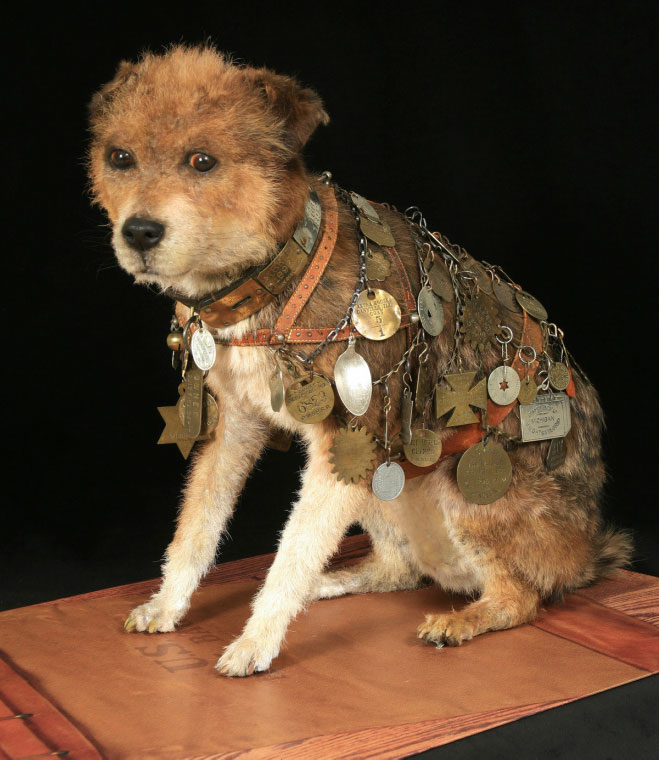
Owney the Dog
In the museum’s atrium, you will see a Railway Post Office on your right in the “Moving the Mail” exhibit. In addition to the train car, you can find one of its most loyal patrons: Owney the Dog. The story of Owney, the scruffy mutt who became the unofficial mascot of the Railway Mail Service (RMS) in the late 19th century, is one of the most popular exhibits in the National Postal Museum. Visit Owney to learn how he became the most well-traveled and well-loved postal dog in history.
Why does he have all these metal tags on his harness? Take a look at this video to learn more about his adventures.
Snap a selfie with this adventurous dog and share with your friends and the museum @PostalMuseum.
Stop #5 (Museum Level 1, Behind the Badge exhibit)
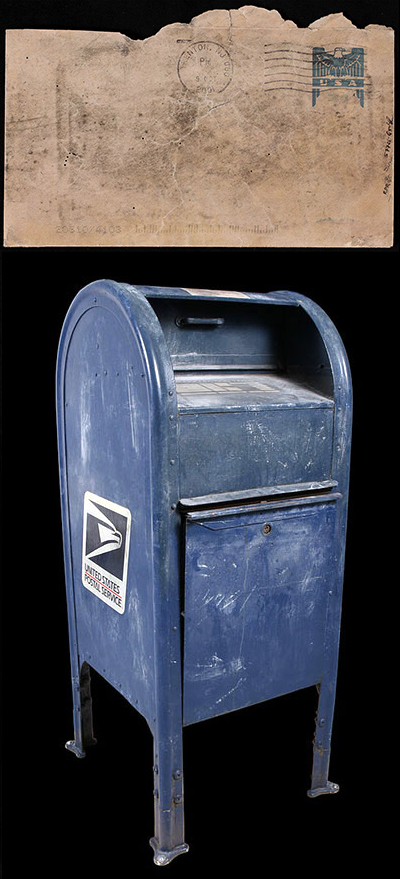
Anthrax Letter & Mailbox
In the Behind the Badge exhibit, you will find many stories and objects from crimes postal inspectors have solved to protect those who use the mail. One of their most memorable cases was in 2001 when anthrax was sent through the mail. At the end of the Behind the Badge exhibit, find the blue USPS mailbox covered in white powder. This collection box was the one the anthrax letters were mailed from. The powder is from its decontamination treatment. In the adjacent case, you can press the button to shine light on the envelope and letter that originally contained anthrax.
The first of these letters killed Florida newspaper employee Robert Stevens. Others were found addressed to politicians and reporters. In the end, 22 people were infected with spores from the anthrax letter attacks, including nine U.S. postal workers. Two of these postal workers died, and the Washington D.C. mail sorting facility where they worked now bears their names.
Stop #6 (Museum Level 1, Atrium)
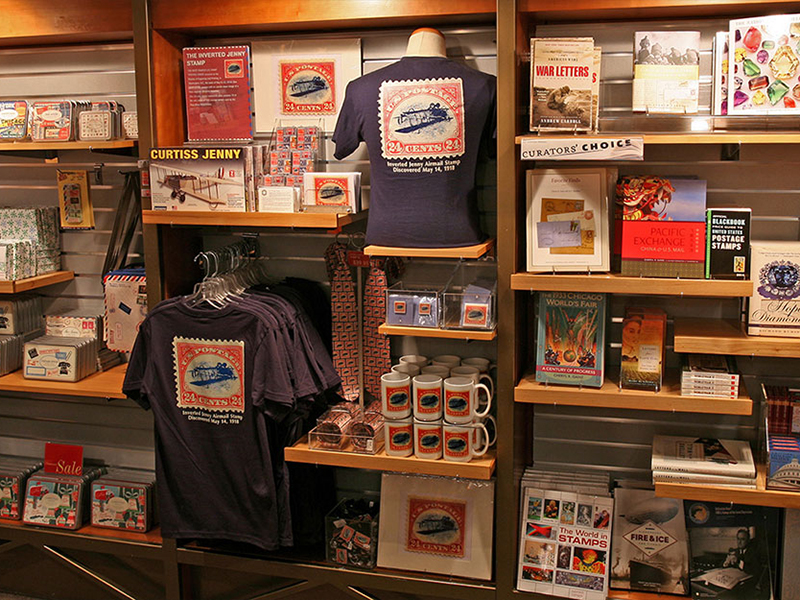
Museum Shop & Stamp Store
Adjacent to the Behind the Badge exhibit is our Museum Shop and Stamp Store – browse fun postal and stamp-themed goods that we sell in the shop! Now you can take home your very own Inverted Jenny rarity (in t-shirt or mug form).
In addition to receiving special cancellations when dropping off a letter here (please ask for a special cancellation), the museum’s Stamp Store holds a variety of stamps that you can’t find in your local Post Office. Ask the USPS clerk at the Stamp Store for a binder that shows their available inventory.
Go into the William H. Gross Stamp Gallery and find the “Gems of American Philately” exhibit. There, you will see four “Inverted Jenny” stamps, still together in what we call a “block of four.” This rarity is treasured by stamp collectors so much that it is the equivalent of the Louvre’s Mona Lisa.

The flight suit kept her warm and safe on her adventures. The envelopes with special cancels, carried aboard those flights, instantly created a collectable desired by stamp experts. They pre-paid for the envelopes flown aboard her plane which she would postmark with the dates of the flight.
Stop #3 (Museum Level 2, William H. Gross Stamp Gallery)
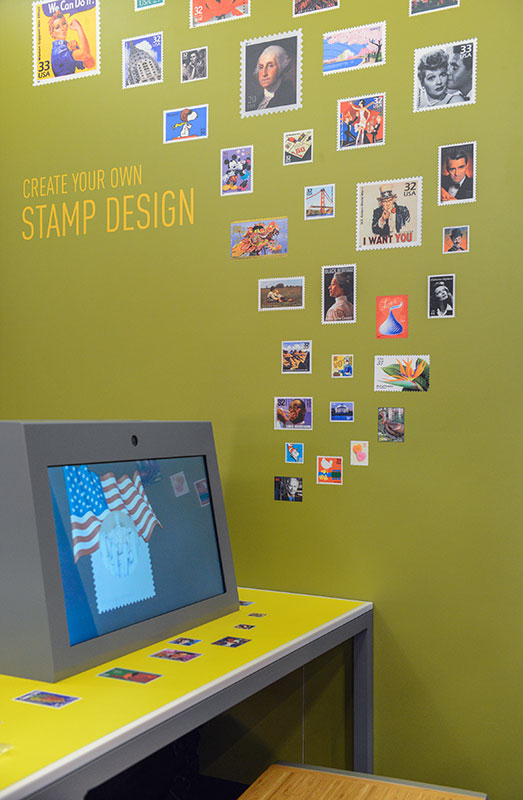
Stamp Design Station
Unleash your creativity at our Stamp Design station! What goes on a stamp? Animals, icons, and you! Use the photo feature to add your picture to the stamp design -- and don’t forget the rate! Once you complete your design, email it to yourself and share it with your friends (facebook, twitter, instagram, etc) or send it to stamps.com to make real postage.
Stop #4 (Museum Level 2, William H. Gross Stamp Gallery)
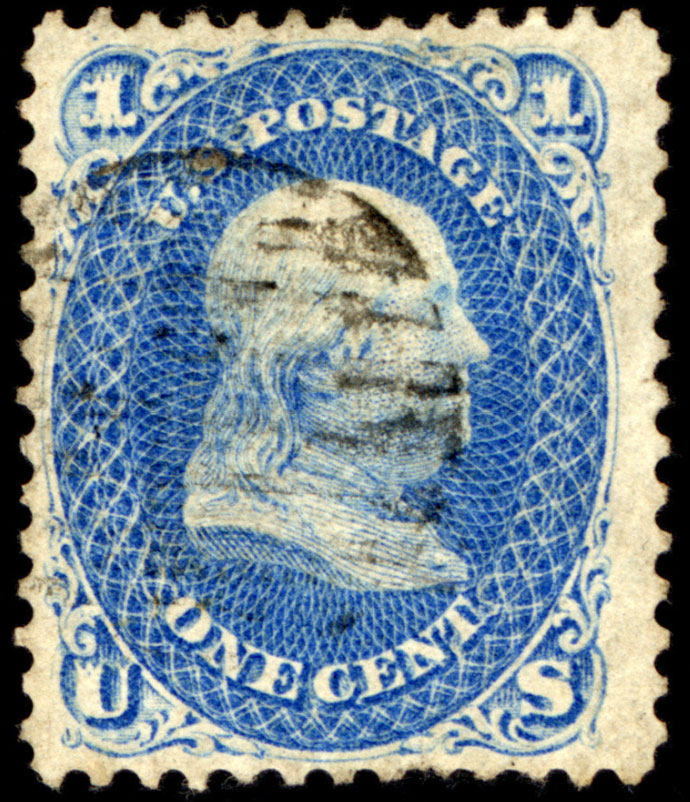
1-cent Z-grill
The National Stamp Salon is filled with the best examples of U.S. stamp material ever collected in one place. There are thousands of treasures here, but if you can only stop to see one thing, it should be the 1-cent Z-grill. You can find it in frame 239 .
This stamp became rare when it was pressed with a grill pattern to help absorb ink and deter re-use. It is one of only two known examples of a z-pattern grill used on a 1-cent stamp. This is the RAREST U.S. stamp.
Stop #5 (Museum Level 2, Historic Lobby)
As you transition from upstairs to downstairs, pause to look up at the ceiling in the Historic Lobby. This building was constructed as a companion to Union Station by the same architect, Daniel H. Burnham. The hexagonal shapes in this ceiling echo the shapes in the Union Station ceiling. Both are of the Beaux-Arts style, promoting balance and symmetry. The building opened in 1914 as the D.C. city post office and served as the central hub for all mail going in and out of the nation’s capital. It was built adjacent to Union Station because all mail leaving or coming into a city like this travelled by train.
Stop #6 (Museum Level 1, Systems at Work exhibit)
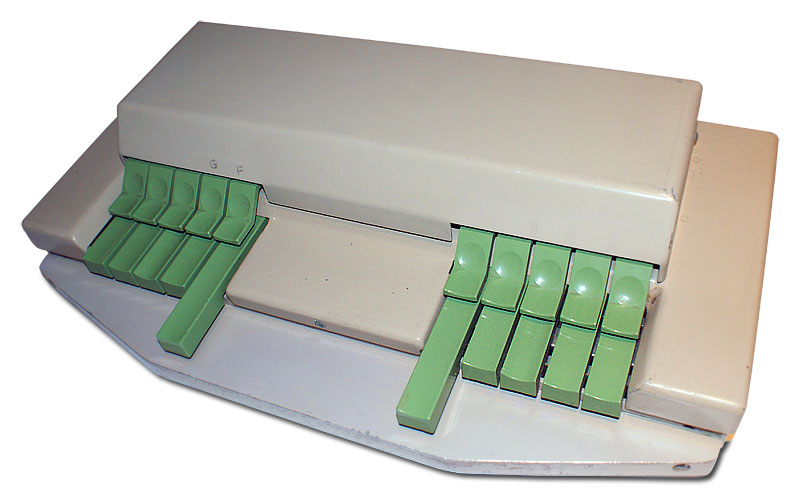
Multi-Position Letter Sorting Machine (MPLSM)
Enter the Systems at Work exhibit by turning right at the base of the escalators. The next time you mail a postcard, you might guess how it gets to its final destination. If you’d mailed it in the 1970s or 1980s, the postcard’s journey surely would have included a trip through a Multi-Position Letter Sorting Machine that had a keyboard like this one.
After the invention of the zip code in 1963, postal employees could use machines like this to code and sort letters at tremendous speeds, sending them via conveyor systems to the correct sortation bin for further distribution. A machine with 12 stations could sort 30,000 letters per hour, about one letter per person, per second. Can’t imagine it? Give it a try at the interactive station or check out this video clip .
Stop #7 (Museum Level 1, Railway Post Office in the Atrium)
Stop #8 (Museum Level 1, Mail Call exhibit)
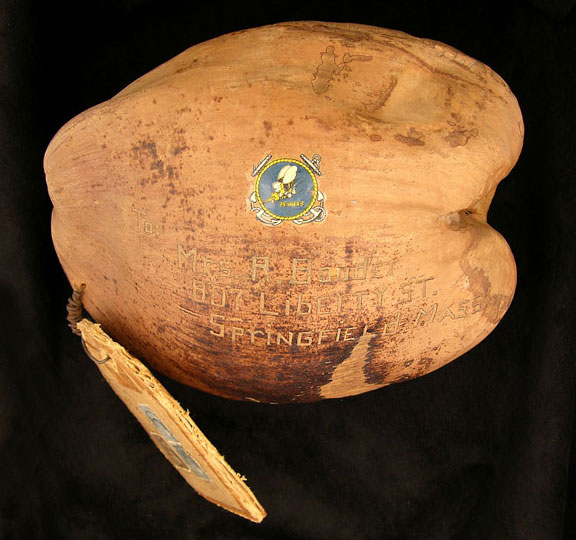
Coconut Mail: This is nuts!
What’s the strangest thing you’ve ever received in the mail? Did you know that you could (and still can) send a coconut by mail? In the Mail Call exhibit, you will find the coconut that Mrs. Marie Boudet received one day in early 1944. It was from her husband, Raymond, a Navy Seabee who was stationed in Hawaii during World War II. The postage cost 37 cents and was canceled by the U.S. Navy, the Navy Censor, and the U.S. Department of Agriculture.
An unusual love letter from Marie’s husband, the back of the coconut (which you can’t see because of how the object is displayed) bears a heart pierced with an arrow, inside of which is carved “Ray” and “Marie.” The back is also carved with the message “Seabees Hawaiian Islands 43-44.” A paper decal of a scantily clad hula girl playing a ukulele embellishes the message. Any piece of mail sent without additional packaging around it is called “Naked Mail.”
To see images of the back of the coconut and to read more about interesting things that were sent through mail, visit this page on our website .
Stop #9 (Museum Level 1, Behind the Badge exhibit)

Stop #10 (Museum Level 1, Atrium)
Docent-led tours are an excellent way to see the highlights of the National Postal Museum. The museum has regular free tours for visitors. Groups of 10 or more visitors need to schedule in advance to guarantee availability. Self-guided tours, school field trips , and guided tours for walk-in visitors are also available.
Groups of 10 or more visitors planning to attend a Museum Highlights Tour need to schedule their tours in advance. Email: [email protected] at least three weeks in advance to make reservations for your guided group tour. Highlights Tours may be scheduled at 11:00 a.m. or 1:00 p.m. These tours are approximately an hour long and are not recommended for school groups.
Drop-in tours
Introductory tours of the Museum are offered to walk-in visitors at 11:00 a.m. and 1:00 p.m. (based on docent availability). These tours meet at the Museum’s information desk and last approximately 45 minutes. Please check the museum calendar to confirm dates and times.
Self-guided groups may visit the Museum any date or time. Brochures, including a map of the Museum galleries, and information about highlights of the Museum's exhibitions, are available in a kiosk at the bottom of the escalators at the entrance to the Museum. A copy of the self-guided tour map can also be downloaded here.
20-Minute Self-guided Tour Itinerary
1-hour self-guided tour itinerary, download self-guided tour map (pdf), 10 fun things to do with kids (pdf), scavenger hunt (pdf).
More information about self-guided tours for student groups is included in the Student Tours section of this website.

The Post Office Tour Preparation
Here are some key things you’ll want to know before you set your field trip.
- Find out where the General Mail Facility is in your area because they process the mail and have lots of machines for the kids to look at.
- You cannot take pictures inside the processing areas because it would increase the likelihood that fraud could take place. (that’s why I don’t have pictures of the machines, terrorists could get a hold of them and use them to deride the postal service)
- Our post office limited the number of people on the tour to 25. If you have a large group, you may have to arrange multiple times.
The Post Office Tour Review
Now, for my review of the tour. We went with a group of homeschoolers that chat on Facebook and this was the first time I’ve ever met them in person. The kids ranged in age from toddlers to teenagers.
We met our contact, Erica, inside the post office where people stand in line to ship their mail and packages. We were led to the conference room where the kids addressed their envelopes and we discussed things like how many letters were processed at the plant each day as well as the rules.
We noticed that even though some of the kids in the group have learned about addressing envelopes, some put the zip code before the city, others didn’t remember their address (it wasn’t just the elementary age kids!), and more than a few had to scratch things out. So, I recommend practicing prior to the field trip even if they have studied it in the last 12 years.
Do your kids need some practice addressing envelopes? My kids and I recommend Exercises in English, a curriculum that teaches grammar, usage and mechanics in a variety of situations including writing and addressing letters.

Then, we got to have a tour of the floor where all the mail is sorted. I’d heard that post office floors were covered in mail that was kicked around. Perhaps, that’s how it is at another facility. This place was neat and tidy.
The kids got to see their mail get sorted in less than a second in a mail sorting machine after we were told how it works. The machines are normally closed for safety when processing mail. We got a special treat, we got to see how the moving parts worked once everyone was at a safe distance. Since the machines are really long, the mail got sorted by the machine twice so they could see how each section of the machine works.
Part of our tour included seeing the machines that sort catalogs and magazines. We didn’t get to see the machines in action, but we got to get up close to every section and hear how they worked. I didn’t know the post office received several magazines in a bundle that were wrapped like the newspapers I received as a paper carrier decades ago.
We also got to see the dock where semi trucks deliver and/or pick up the mail to be taken to or delivered from other facilities. While there, we learned how bulk mail works. Vendors pre-sort their mail so that their ads and other mail can skip the sorting machines and taken directly to another part of the post office that puts the mail in order of delivery for the carriers. The Vendors get a discount and the money they spend contributes significantly toward keeping the USPS operating.
The kids and adults were encouraged to ask questions throughout the tour. Some tour guides on other field trips allow questions but get tired of answering them. Our guides were excited to show us what we wanted to know and explain until we understood. I was very excited by this because Caleb, 14, is very inquisitive. He wants to know EVERYTHING from strategy, to how machines work, etc and asked the most questions.
Visiting the Post Office may spark an interest in stamp collecting.
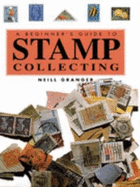
Would I take my kids to the Post Office again in the future. You bet. Our experience was excellent and Jesse is 3 and probably won’t remember it. I also am a Cub Scout Leader. I would love to take them on a tour after we complete the requirements for writing letters and addressing envelopes.
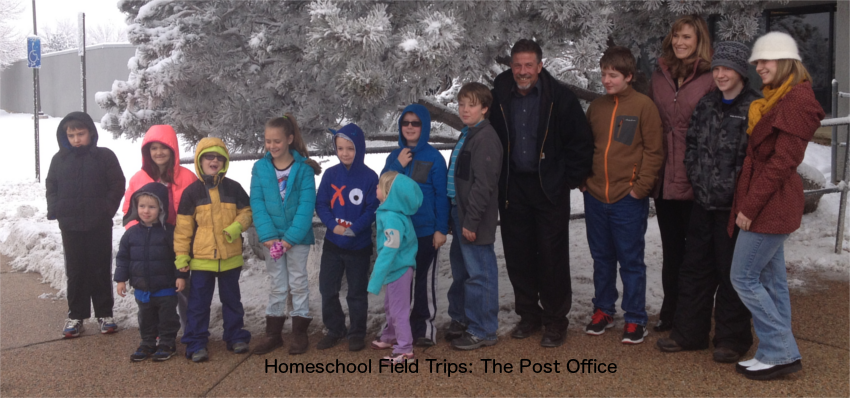
Have you taken a tour of a Post Office? If so, please share your experiences. If not, tell us about that, too.

Leave a Comment Cancel reply
Yes, add me to your mailing list.
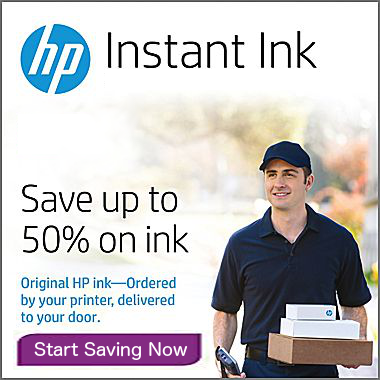
Essential Oils have been one of the biggest blessings for our family’s physical and emotional health and wellness. One of the greatest joys we’ve experienced, besides our 6 kids, is showing others what they oils can do for them and watch their faces light up when they finally found a solution to their challenges after a long struggle. dōTERRA’s essential oils are the tools we use to keep our wellness costs low.
We're not around right now. But you can send us an email and we'll get back to you, asap.
Start typing and press Enter to search
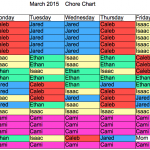

Follow OfficeFinder:
- Leasing Office Space
- Buying Office Space
- OfficeFinder Members
- Office Space Tools
- Find Office Space
Office Quick Links
- Office Space Calculator
- Office Space Blog
- Planning Checklist
- Space Measurement
- How Much Space?
- Office Blog
Leasing Information
- Leasing Process
- Small Office Alternative
- Virtual Office Space
- For the Larger User
Buying Information
- Mortgage Calculator
- Buying Process
- Lease or Buy
- Request Information
- Request A Quick Call
Search OfficeFinder.com
- OfficeFinder Local
OfficeFinder 360° Interactive Panoramic Virtual Tours
Custom virtual tours, virtual sales platform and google business view tours.
Our interactive 360° virtual tour will allow you to move right, left, up or down through each of the panoramas to get a true visualization of the area in which you want to tour in crystal clear high definition. Just like you would do if visiting in person. One of the big benefits, when it comes to buying, is this will allow you to preview the properties of interest prior to physically going to the site; saving you tons of valuable time.
You can view a property in a much easier way than through traditional still photography or video. You can interact with the virtual tour and have control over what you look at; just like a personal visit to the site.
If a photograph is worth 1,000 words, a virtual tour is worth 1,000 photographs
Where to get your virtual tour
We provide virtual tours for office space and other commercial real estate properties at very affordable prices throughout the US and Canada. Visit our virtual tour sister company at TrueView360s.com or call us at 425-391-8900 ext 101 for more information. We do both Google virtual tours or custom virtual tours throughout the US and Canada.

Where to find OfficeFinder’s 360° Interactive Office Space Virtual Tours
You can find our office space virtual tours on the following Local pages. They will be located near the top of the listing for office space on the page.
- Mountlake Terrace
- San Francisco
Virtual Sales Platform
A virtual sales platform provides all the sales tools you need in one place and allows flexibility in making a remote sales presentation. The success of a company’s virtual selling effort depends on how well their sales team can interact with prospects in a virtual environment. What really matters is that you can not only communicate why the prospect will be better off in your space but also keep them engaged in the presentation. What better way to do that than to provide them a visual virtual reality that will let them walk-through the space and imagine they are there.
What should a Virtual Sales Platform do?
- Increase audience engagement
- Increase physical visits
- Increase salesforce productivity
- Simplify online presentations
- Shorten the sales cycle
- Paint a picture of what life will look like if they purchase your service
- Streamline content management solutions
- Build a competitive advantage
- Improve Return on Investment
- Provide a WOW factor
Our sitster company, TrueView360s, builds the industry’s most capable sales enablement solution that is geared for today’s new consumers. Our Virtual Sales Platform uses diverse digital technology tools to feature the best your property has to offer. Our visual tools support your value proposition.
TrueView360s’ virtual sales platform includes all your multi-media assets in one place for easy access during an online presentation to give the prospect the feel that they are in your space. Including:
- An easy to navigate 360° virtual tour
- Interactive floor plan to guide the prospects to different locations within your space
- Still photographs to highlight key areas and amenities
- Video (if available)
- Upload of the virtual tour & still photographs to Google to enhance your Google business listing
- Customizable to meet your needs
Provide your sales team with powerful, immersive visual experiences, a professional presentation and selling tool. Easy to share, better than print and WOWs your prospective customers! We provide your salespeople with the best way to showcase your property to prospective customers anywhere on Earth.
Find out more

Also Available On Google Maps Business View
.png)
As a Google Trusted Photographer, we can also post virtual tours to Google Maps to help enhance search engine recognition for your business and to allow Google searchers to view your property directly on Google. An example from Google is below.
Most buildings with executive suite or coworking spaces will also have conventional office space available, too. Contact our Tenant Reps to help you with them.
WE DO THE WORK. YOU AVOID MISTAKES AND GET GREAT OFFICE SPACE Since 1995
Why Use OfficeFinder | Locate an OfficeFinder | Leasing | Buying | Tools | Links | Office Space Listings Home | Login | Affiliate Program | Media Kit | OfficeFinder Wizard | Site Map
Copyright © 1995 - 2024 OfficeFinder™ All rights reserved.
- Prodigy Math
- Prodigy English
From our blog
- Is a Premium Membership Worth It?
- Promote a Growth Mindset
- Help Your Child Who's Struggling with Math
- Parent's Guide to Prodigy
- Assessments
- Math Curriculum Coverage
- English Curriculum Coverage
- Game Portal
The 22 Ultimate Virtual Field Trips & Tours for Students
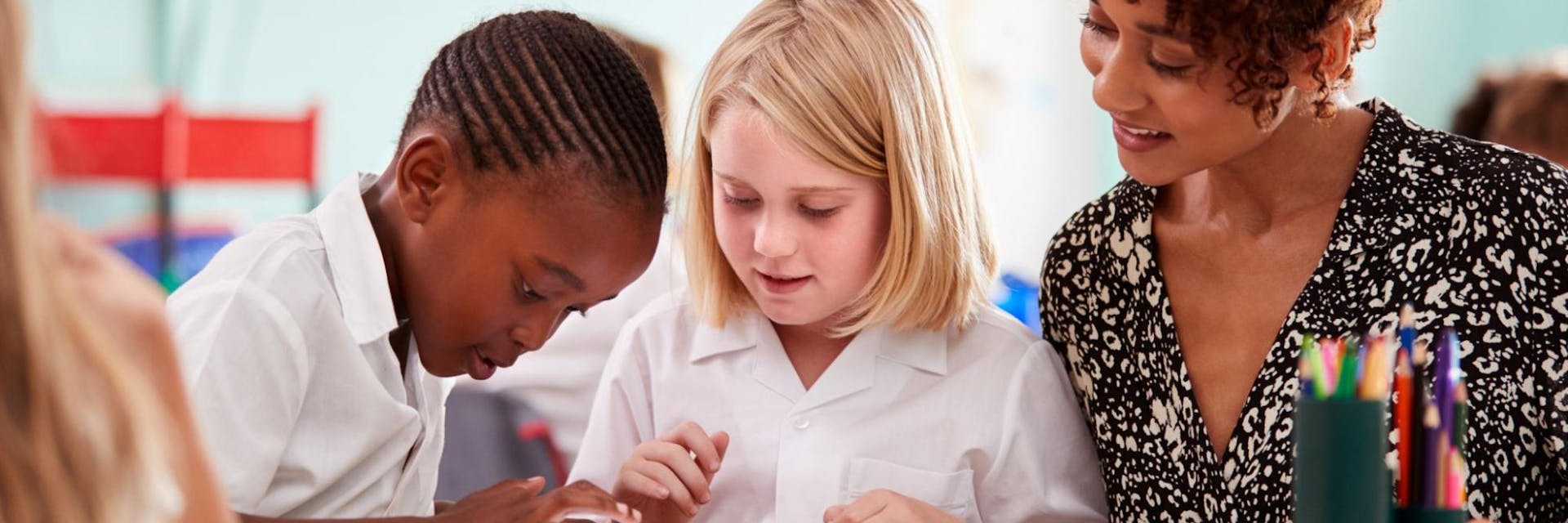
Written by Maria Kampen
Inspire your students to love learning with Prodigy Math.
- Teacher Resources
What is a virtual tour and how does it work?
Technology powering virtual field trips for students, 22 best virtual field trips for students, how to incorporate virtual tours into learning activities.
Imagine taking your entire class to see one of the seven wonders of the world up close and personal — and then being back at school before the final bell rings.
The rise of online learning activities during the pandemic accelerated the availability of virtual field trips , tours and experiences for students of all ages. Now there are many interactive virtual tours available to places that would be impossible to reach on a class trip — the pyramids in Egypt, the Louvre museum in Paris or even an African safari.
We put together a list of 22 unforgettable virtual field trips and experiences that will help your students see amazing sights, connect their learning to real-world experiences and expand their horizons.
Virtual tours allow students to explore noteworthy places around the world, from the comfort of their home or the classroom.
Virtual tours give students the opportunity to stop, explore and guide learning at their own pace. While they’re exploring, they can get up close to nature or artifacts that might not otherwise be easily accessible.
Virtual tours can be many different things, including:
- A live webcam of a zoo or animal habitat
- A 360 degree view of a location you can manipulate
- Pictures enriched with helpful information and diagrams
Even ten or fifteen years ago, video tours would have been rare or impossible. Advancements in technology and education have combined to help people learn and explore from anywhere!
- National Geographic creates TV series about nature, history and archaeology
- Food shows like Netflix’s Salt Fat Acid Heat take viewers on food journeys across the world
- Planet Earth , a television series, brings far-flung locations to your living room or classroom
- Discovery Education gives educators access to multimedia resources that supplement classroom learning
- Video conferencing technology like Zoom lets you connect with people and learning experiences around the world
We love being able to sit at home or in the classroom and learn about different foods, cultures and geography. Why not introduce that to your students?
1. Take a trip to the zoo

Whether it’s live webcams of adorable pandas or behind-the-scenes tours with zookeepers, zoos all over the world offer ways for animal antics to delight and entertain your students.
Some of our favorites include:
- Edinburgh Zoo’s Panda Cam
- Georgia Aquarium’s Beluga Whale Livestream
- The Smithsonian National Zoo’s Naked Mole-rat Cam
- A live feed of African river wildlife in Laikipia County, Kenya
- The San Diego Zoo Live Ape Cam , or any of their other live animal feeds
- Home Safari videos from the Cincinnati Zoo, where zookeepers introduce you to the hundreds of animals that make the zoo their home.
2. Visit The Hidden Worlds of National Parks
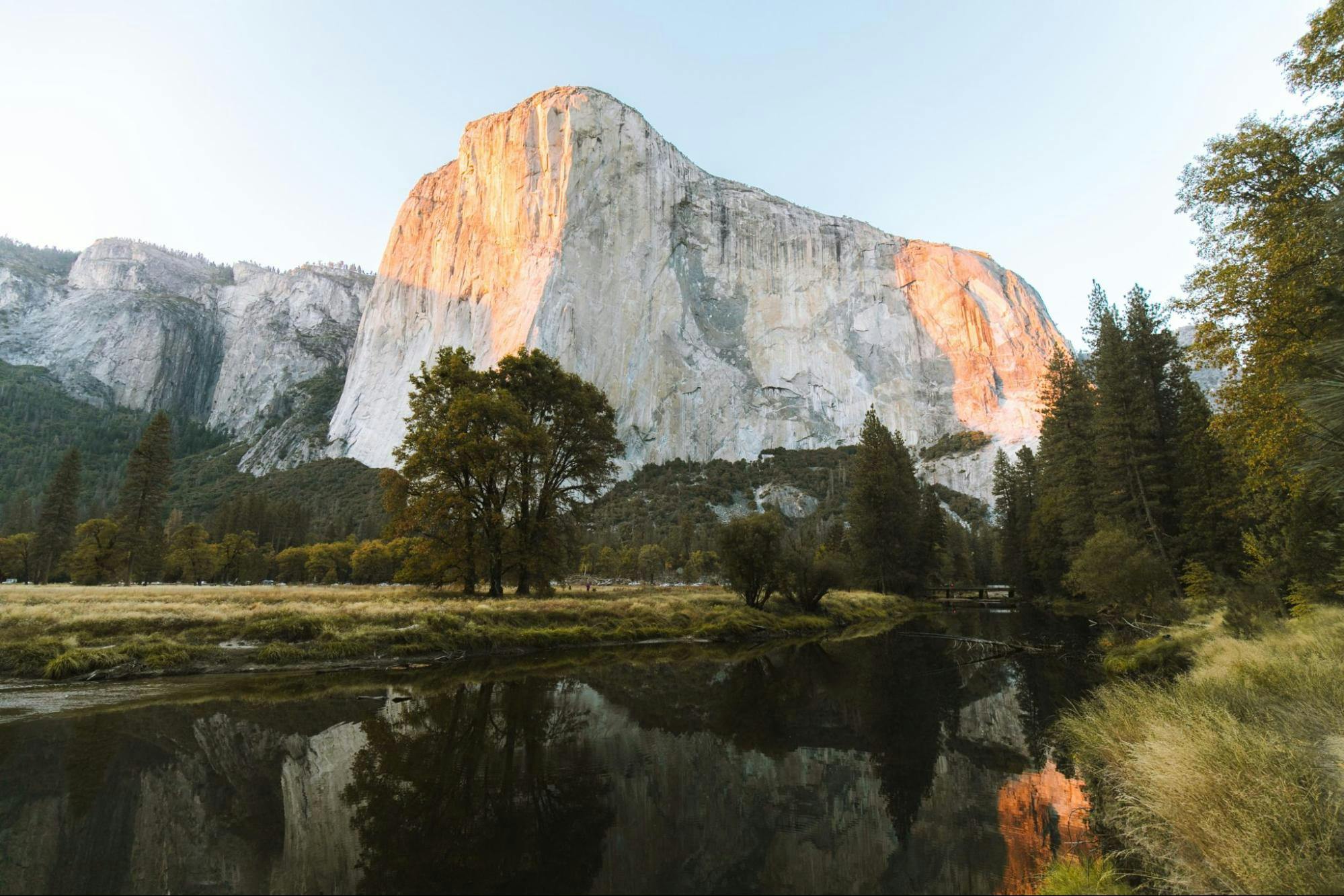
From Yosemite to Mesa Verde, explore some of the USA’s most beloved and beautiful national parks with The Hidden World of National Parks .
Supported by Google Arts & Culture , students can use the same technology that powers Street View to explore the national parks at their own pace.
The program also includes guided tours from park rangers, where they share their expertise as you explore. Follow the on-screen prompts and let them guide your adventure!
3. Watch the Monterey Bay Aquarium Sea Otters
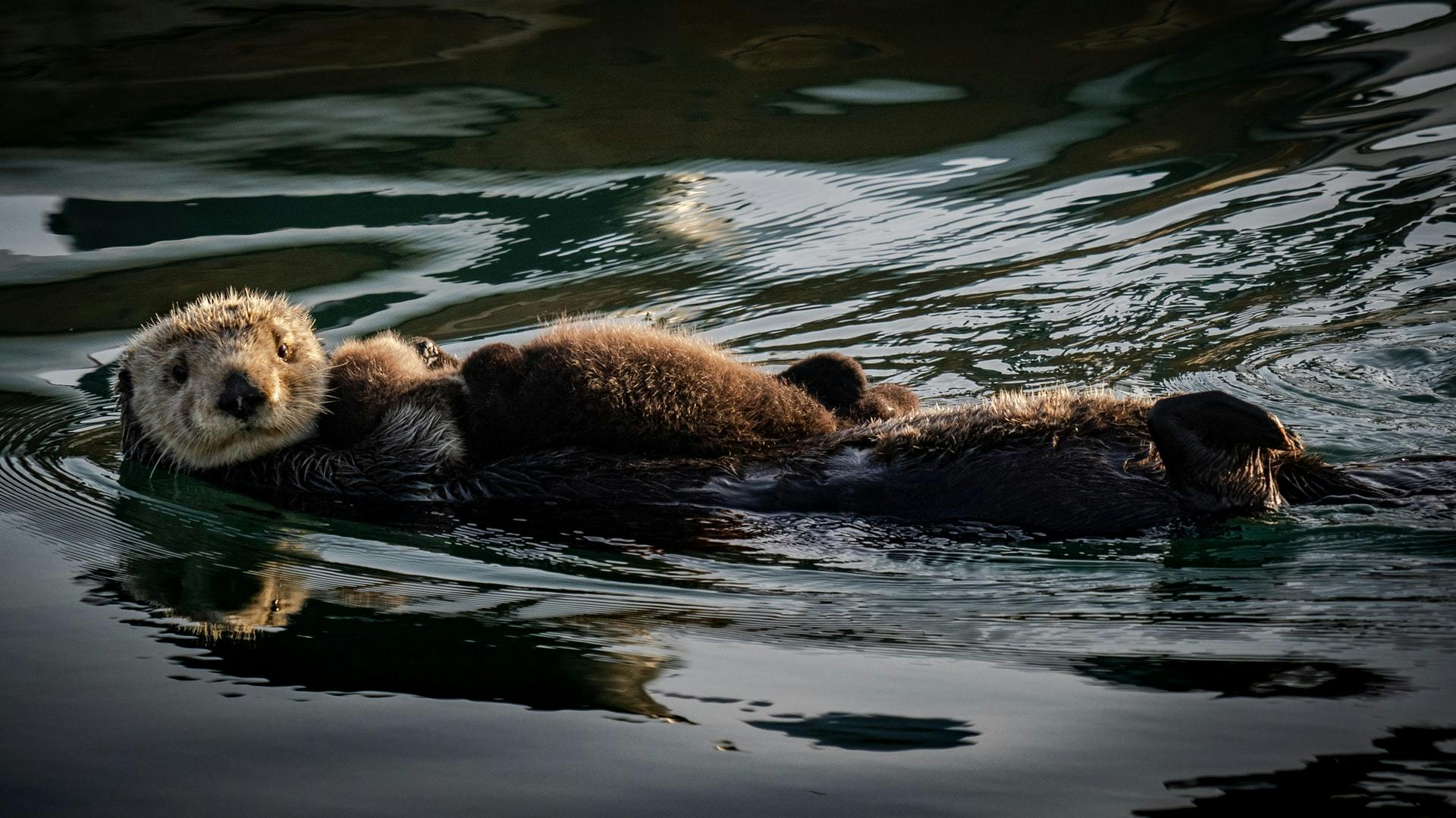
Play with the sea otters as they swim around Monterey Bay Aquarium in California! Tune in throughout the day to see them being fed, learn fun facts about otters and watch them play in the water.
If you’d like to check out some other aquarium-related channels, Monterey Bay Aquarium also offers Open Sea or Kelp Forest live streams.
4. Swim through Palau coral reefs
Travel to the Pacific Ocean through a virtual adventure and see the Palau coral reefs . Hosted by Nature Lab and the Nature Conservancy, this tour teaches students about the importance of preserving some of the most fragile ecosystems in the world — no wetsuit required.
Take learning to the next level with the Nature Lab’s Teacher’s Guide , which includes discussion questions and related resources to keep learners engaged.
5. Visit the surface of Mars
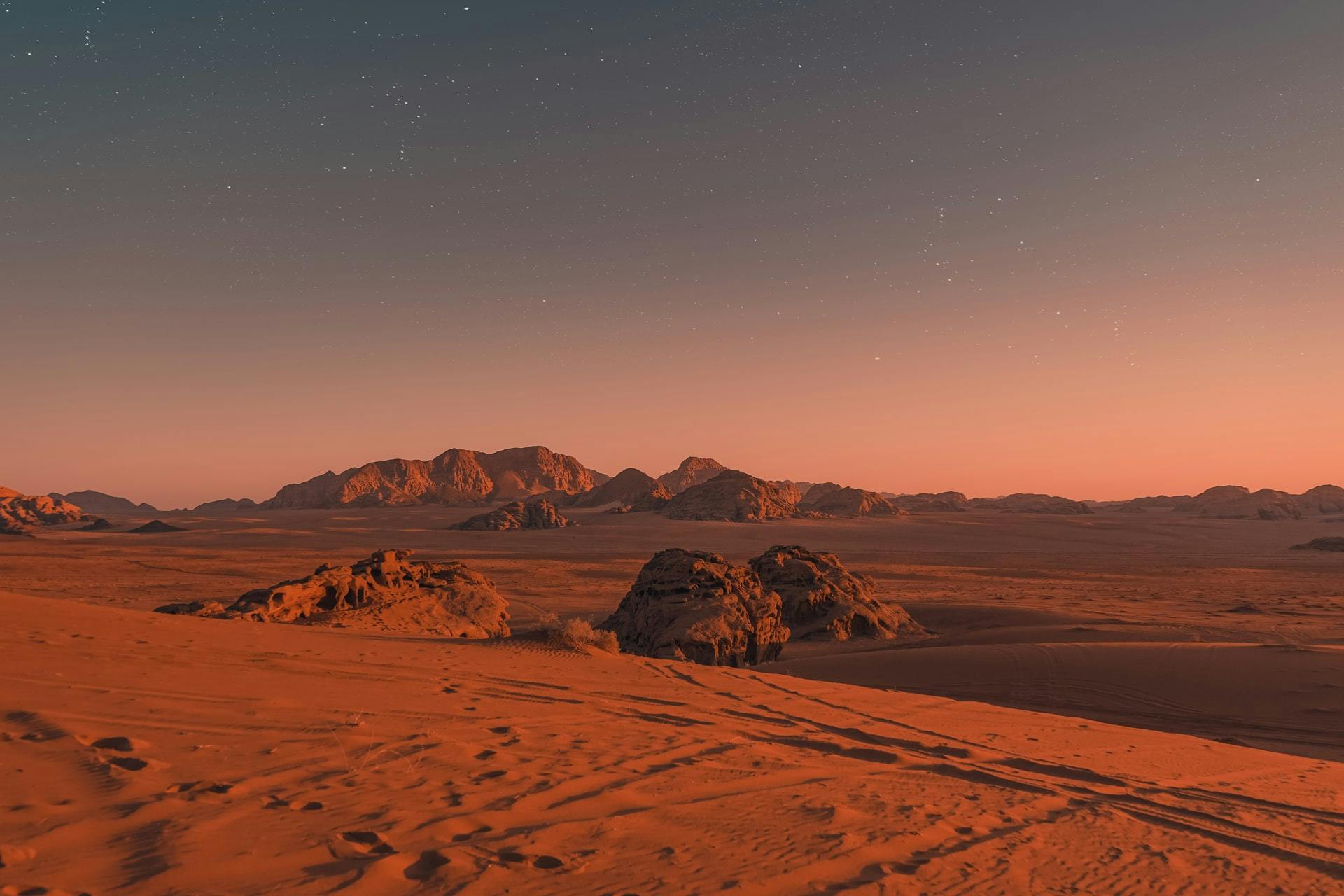
It took the Perseverance rover about seven months to get to Mars. But thanks to this virtual tour , you and your students can go for a visit in just one afternoon.
Created by Google and NASA’s Jet Propulsion Laboratory, this virtual tour takes you through the history of Mars explorations and turns what might be a far-flung topic into something right at students’ fingertips. They’ll explore the surface of Mars, learn more about the rovers that have studied its surface and understand how Mars exploration fits into the history of space travel.
6. Power up with renewable energy
Powering the Planet from the Nature Conservancy is an interactive lesson that focuses on renewable energy sources. It explains to students how energy around them is necessary for life, and covers how energy can be sourced in a way that’s not harmful to the environment.
All the Nature Conservancy’s programs come with a Teacher Guide , which offers lesson plans and activities relating to the virtual tour.
7. Walk the Great Wall of China
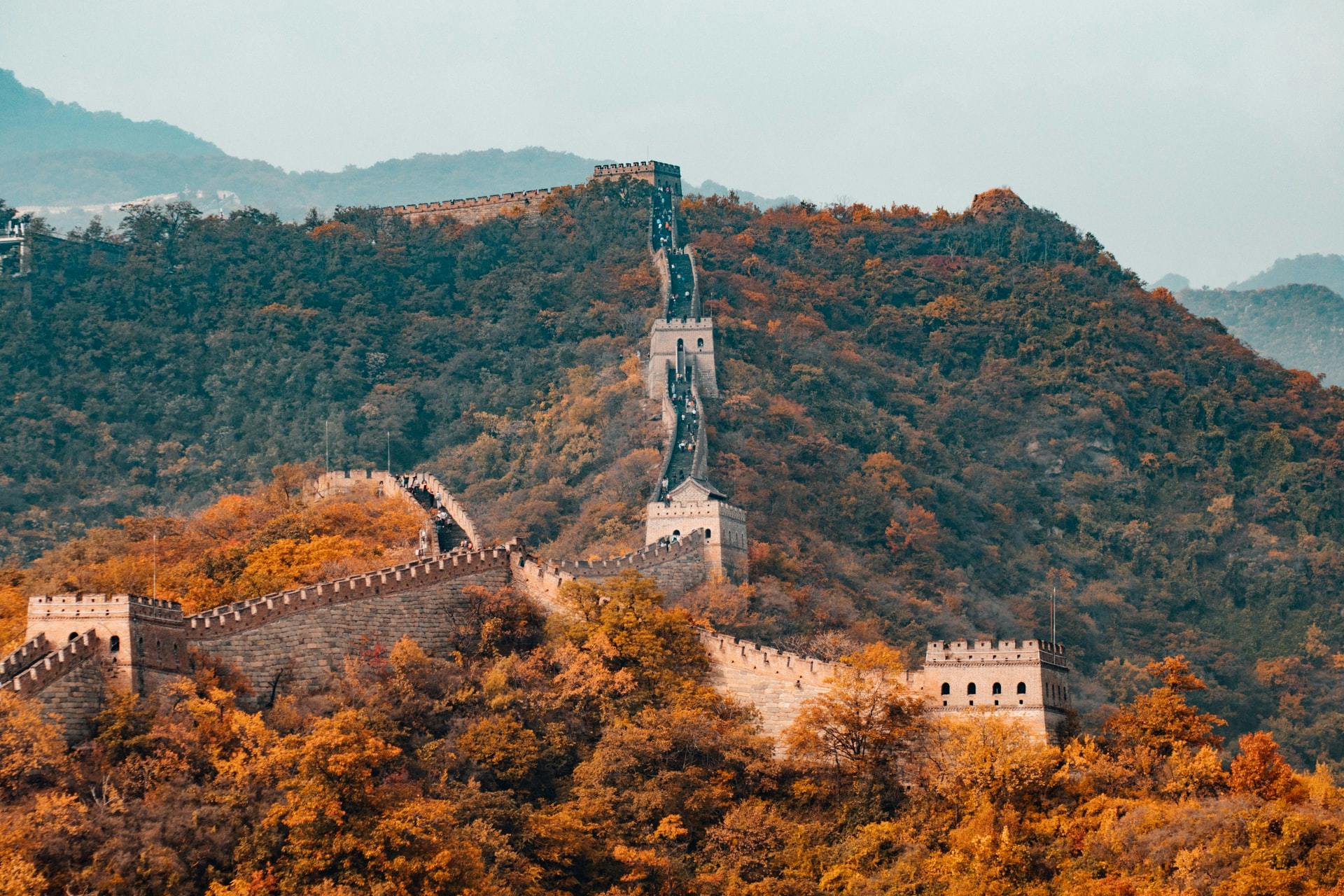
The Great Wall of China is over 13,000 miles long, so be sure to pack your walking shoes for this trip!
This virtual tour lets students explore key points in the Great Wall of China, plus see the history and amazing view up close.
8. Float around the International Space Station
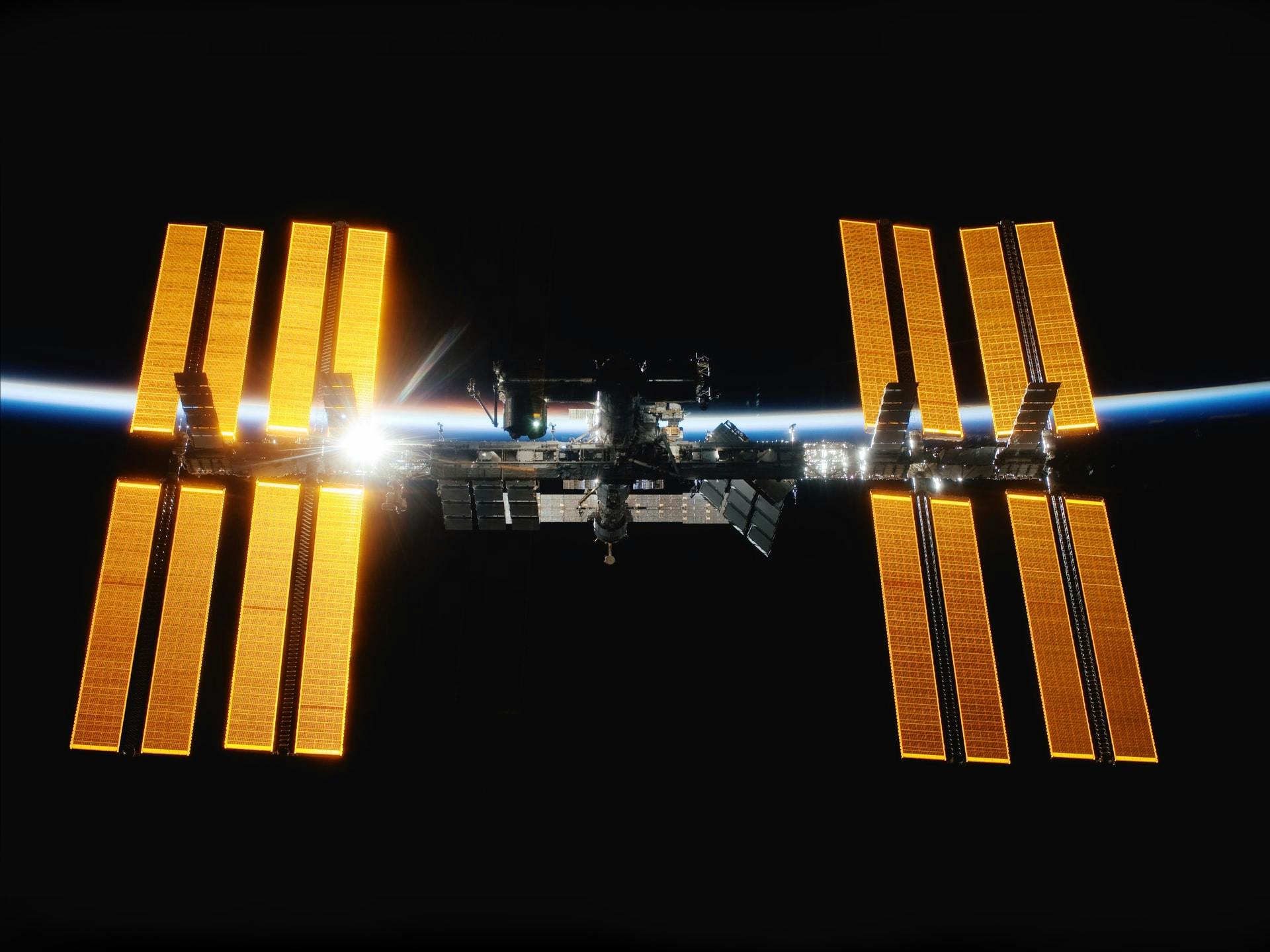
Did you know that astronauts have continuously inhabited the International Space Station for 20 years? Now your class can join them!
With tours of the different parts of the space station, facts about the layout and assembly, and information about the different astronauts who’ve visited from around the world, students can get an out-of-this-world experience from the comfort of their home or classroom.
Plus, there are plenty of images, videos, graphics and media resources to help you tie topics into your curriculum.
9. Scuba dive in the Great Barrier Reef
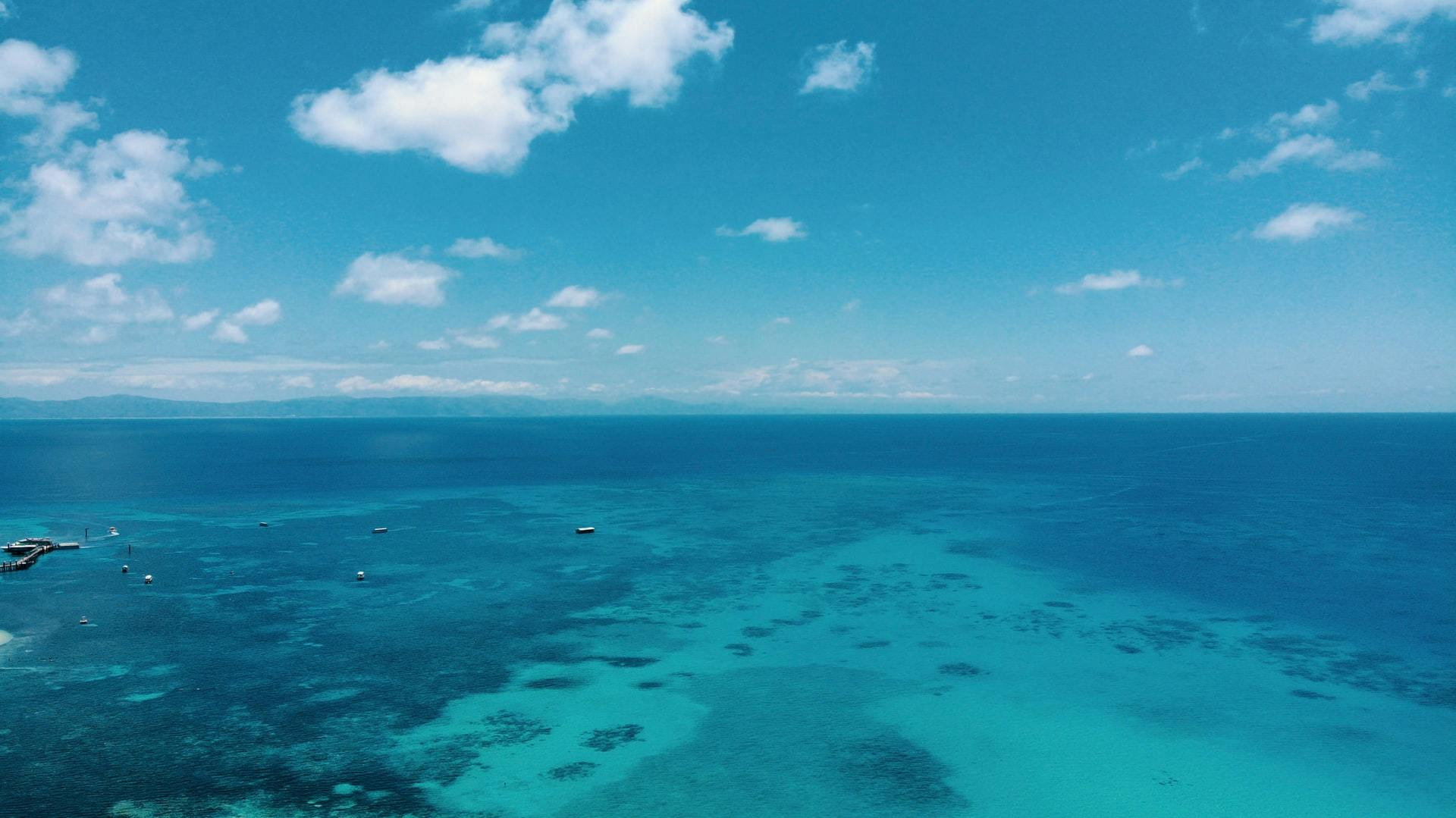
The Great Barrier Reef is a delicate ecosystem especially vulnerable to the effects of pollution and climate change.
David Attenborough’s Great Barrier Reef is a tour created in partnership with the Natural History Museum in London that teaches everyone about the beauty and fragility of one of the world’s greatest natural wonders.
The Great Barrier Reef is also available on Google Street View through Google Maps as one of the first underwater locations to be mapped.
10. Learn about water and Colombia’s páramo ecosystem
Just outside of Bogotá, Columbia, is one of the most diverse ecosystems in the world. In this virtual lesson, students will learn about how the water cycle plays a vital role in biodiversity, and get an up-close look at the animals that call the area home.
Use the accompanying Teacher Guide to help students discuss the topic and stay engaged with the lesson. And check out the rest of the Nature Lab's YouTube channel for even more virtual experiences.
11. Tour the Smithsonian Museum of Natural History
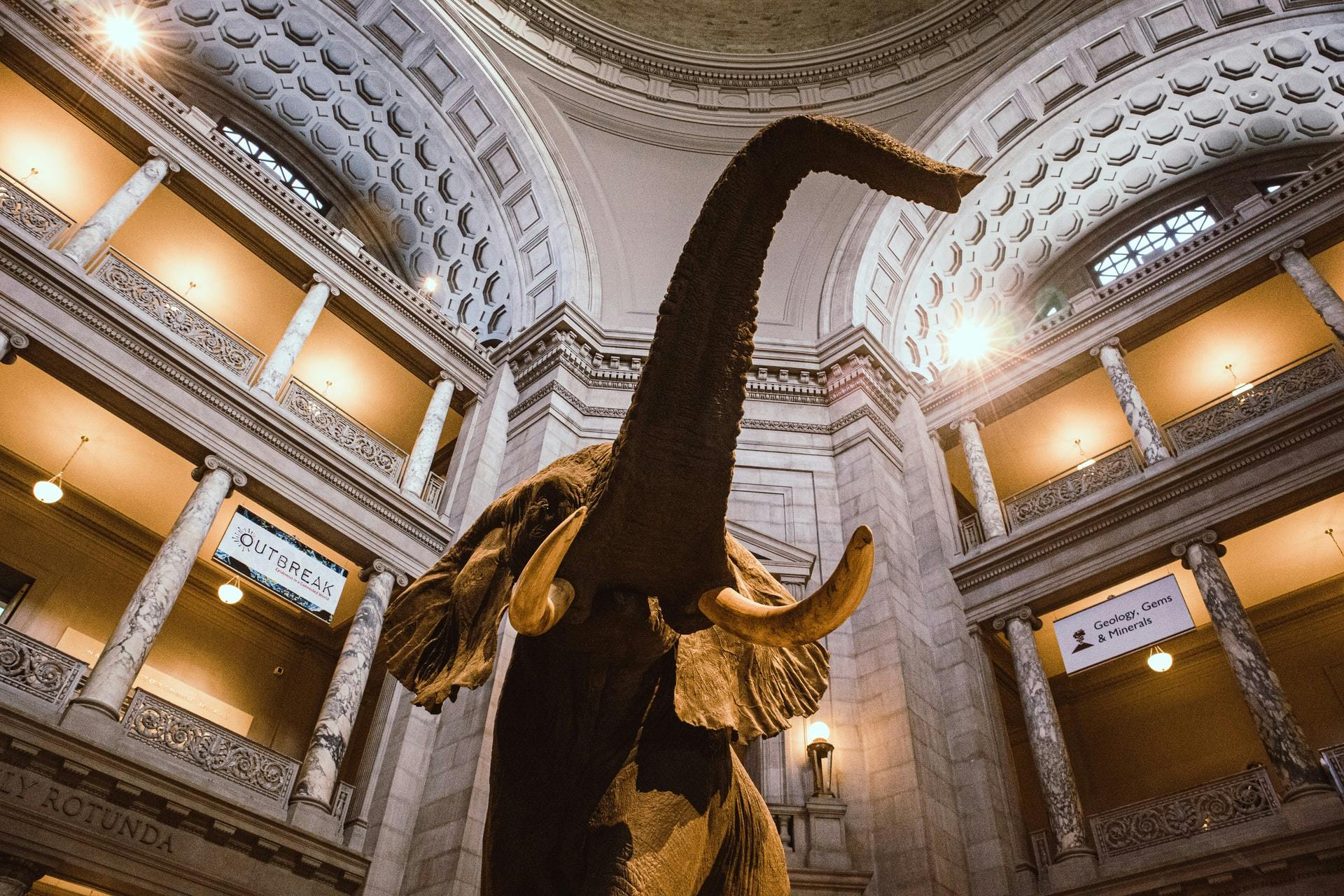
The Smithsonian Institute is the world’s largest museum — so there are plenty of things for students to explore.
With a variety of virtual tours to choose from, the Smithsonian Museum of Natural History is full of ways to get students excited about learning. Students can watch narrated tours of different exhibits ranging from history and geography to the research stations in the museum.
Whether students want to walk through the museum on their own or let someone else do the talking, there’s something for every lesson.
12. Get caught up in the American Revolution
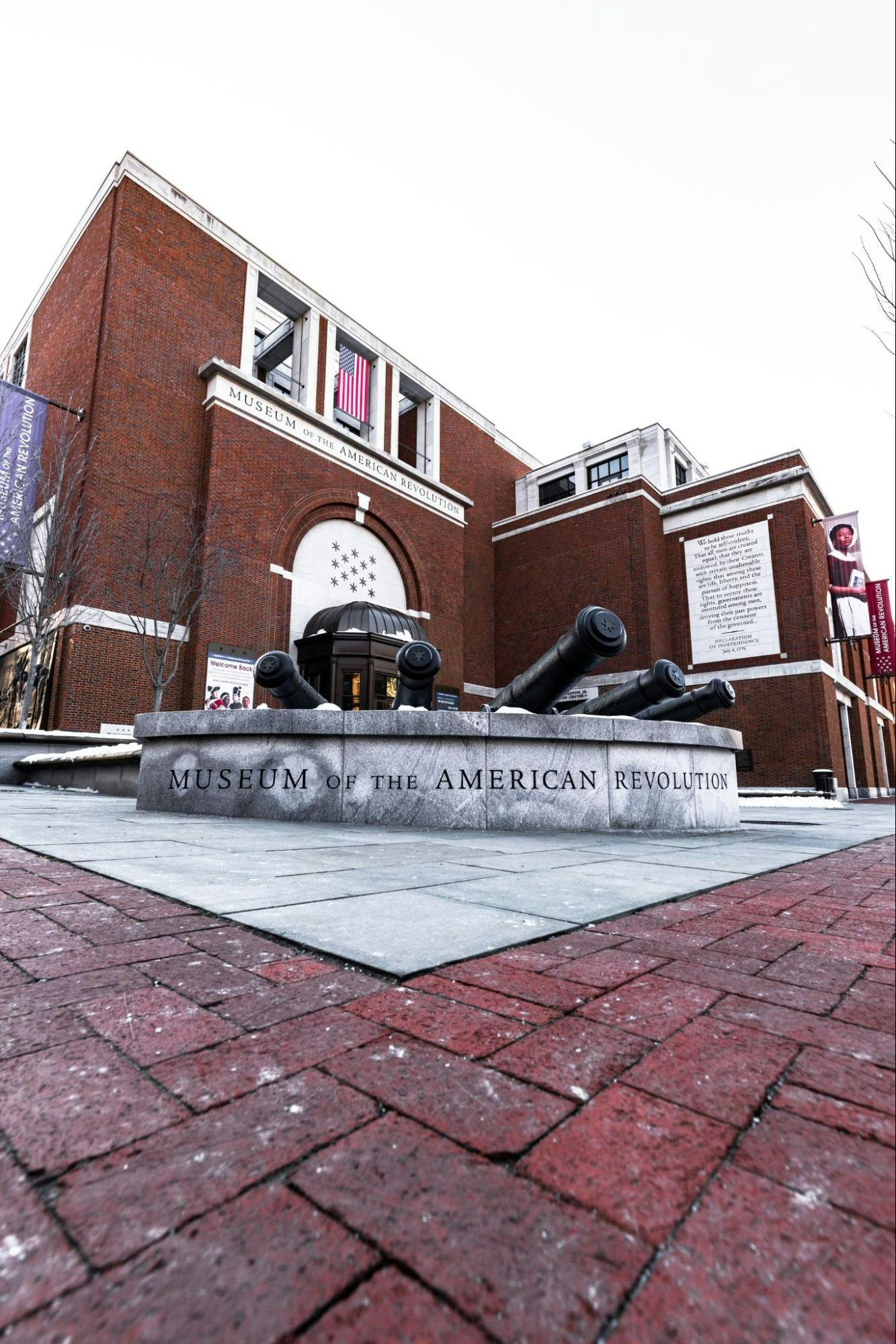
History meets the present at the Museum of the American Revolution !
This virtual tour lets students see artifacts, meet museum staff and hear stories of real people who fought for American independence.
It also comes with a Classroom Ki t for 2nd to 8th grade that supplements learning and makes it even more meaningful.
13. Trek up Mt. Everest
This 360 degree video from National Geographic lets students explore Mt. Everest along with a group of researchers. Together, they’ll discover what kind of effects climate change has on the mountain, and how we can work to preserve natural landscapes.
Not up for climbing mountains? Take a virtual ride on Expedition Everest , the tallest rollercoaster in any Disney park! But beware — there’s a monster lurking in the dark.
14. Get the right angle with Explore Geometry
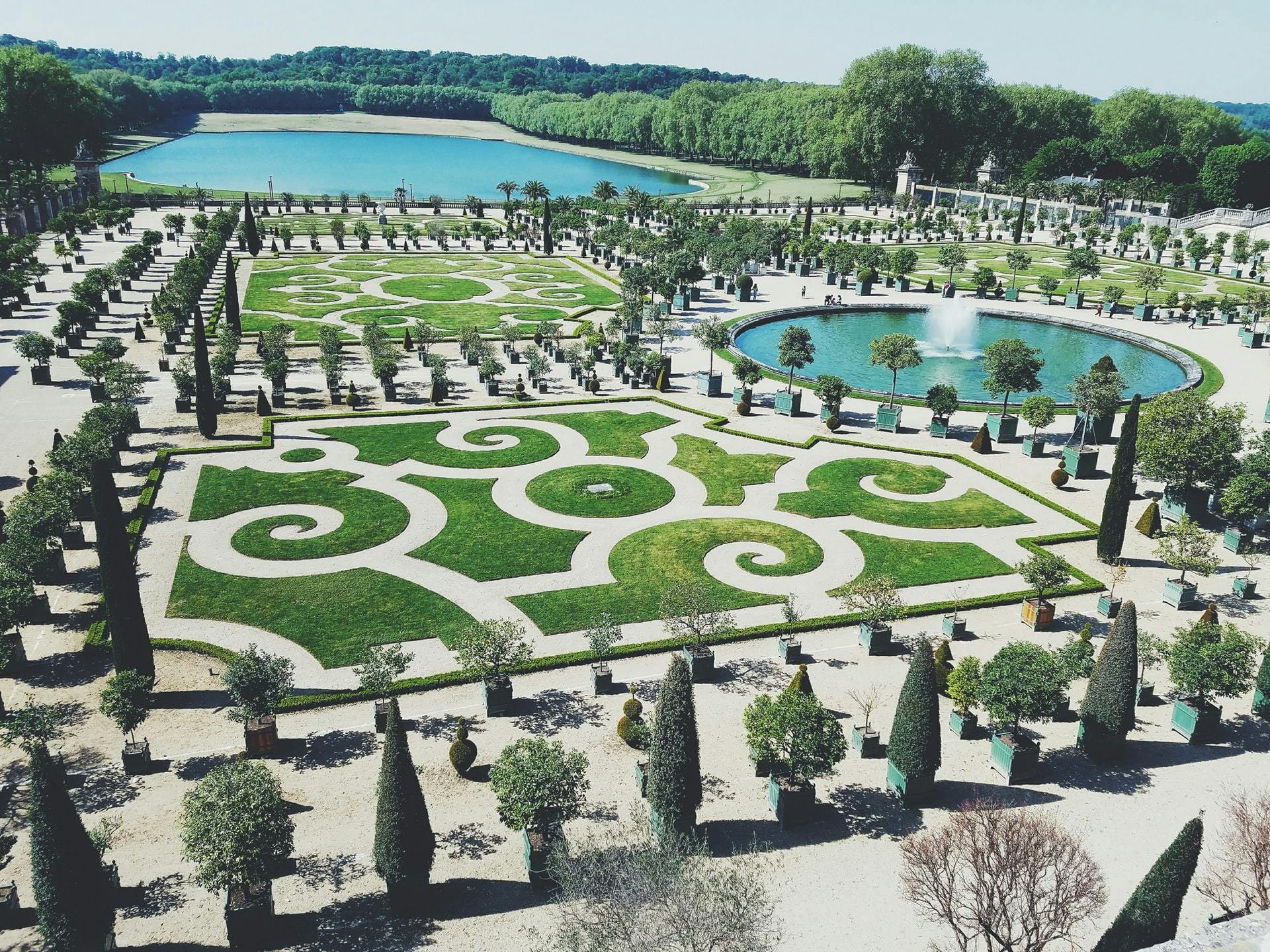
Powered by Nearpod, Explore Geometry ’s lesson plans connect classroom lessons with architecture in the natural world.
Students can explore the gardens of Versailles to learn about the geometry of a French garden before moving on to the next lesson and putting their skills to practical use.
15. Wander through the Metropolitan Museum of Art in New York City
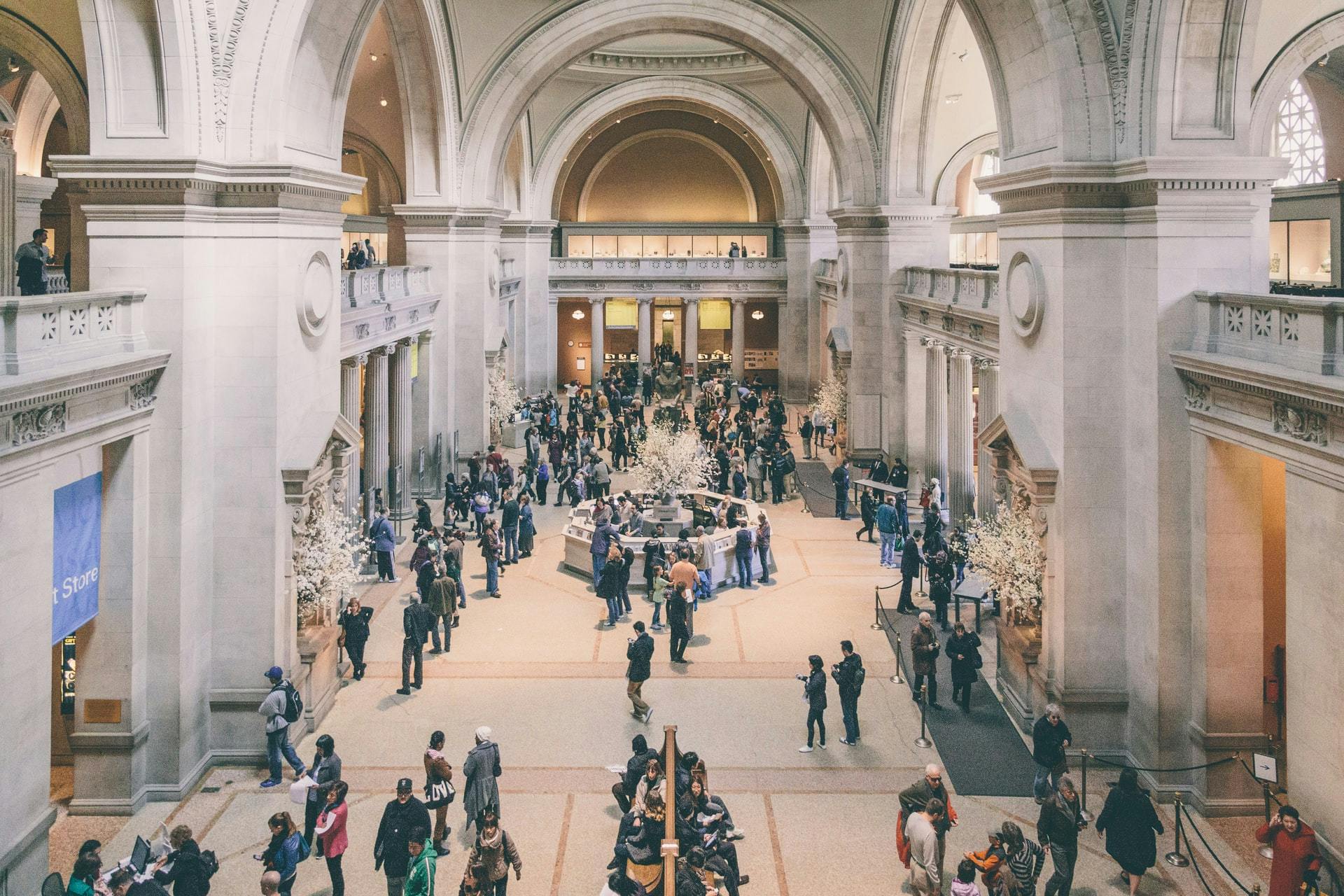
One of the most well-known museums in the world, students can now explore The Met’s vast collections with the Met 360º Project .
Virtual tours help students get a sense of the space, art and collections inside of the museum. Whether they’re interested in the Met Cloisters or the Arms and Armor gallery, students can go at their own pace, accompanied by a soothing soundtrack.
You can also book virtual tours with a museum guide to line up with your lesson plan. Tours are free for NYC public schools and all Title I schools, and $200 USD per class for other schools.
16. Explore history in the British Museum
Another world-class museum, students can explore the British Museum in London using Google Street View, read facts about the artifacts and connect what they see to their history lessons.
Whether it’s the Rosetta Stone, the Elgin Marbles, Egyptian sculpture or any other historical treasure, there’s something every student will find interesting!
If you want to let someone else do the exploring, there’s also a 46-minute virtual walking tour , where you can skip to the sections that are most relevant to you and your class.
17. Visit the White House
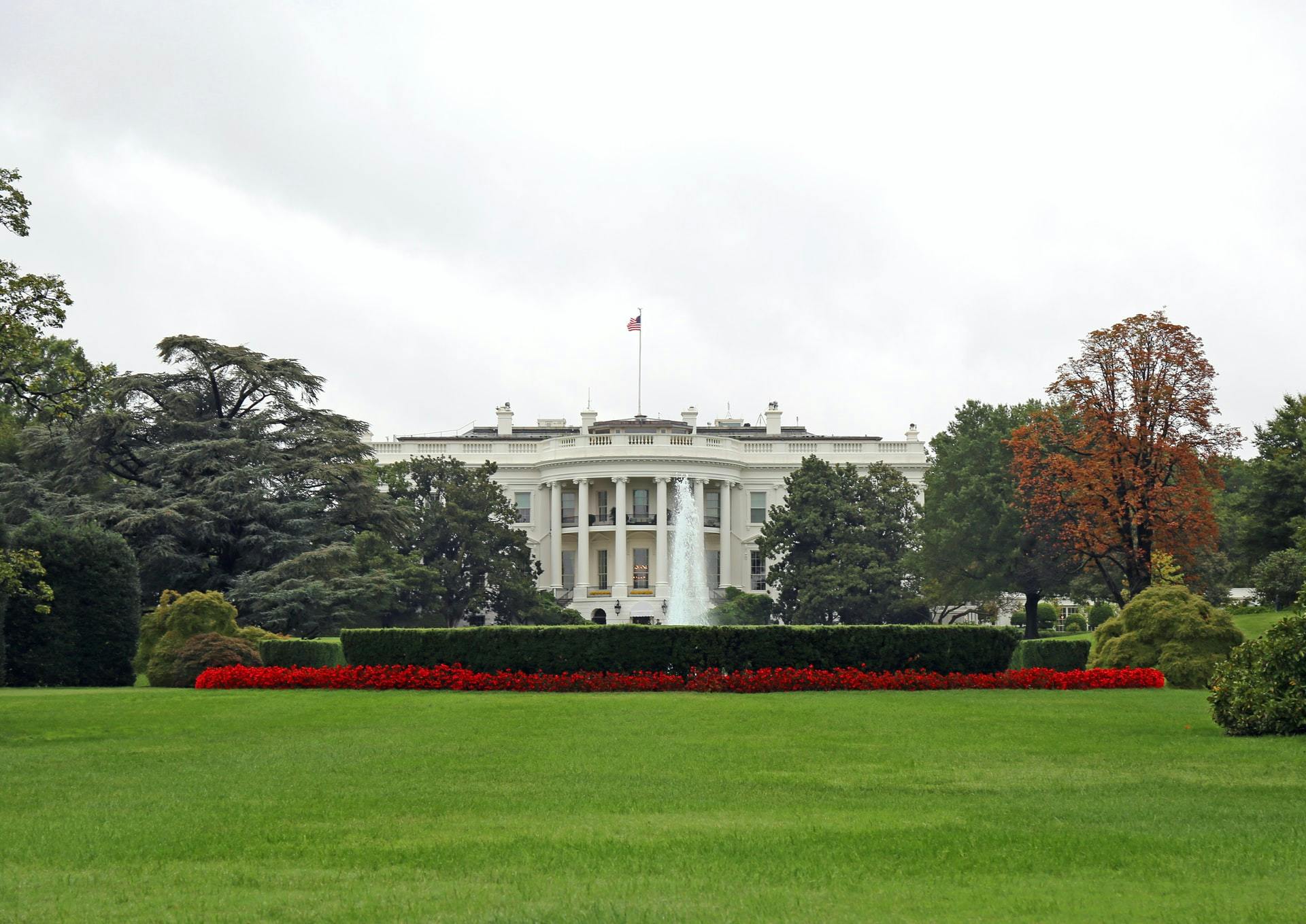
In Washington, D.C. the White House is the symbolic heart of America, and now students can walk the halls for themselves.
Whether they want to take a lap around the Oval Office or wander the building, students can explore this virtual tour from the White House Historical Association . Plus, it comes with class tie-ins like vocabulary lessons and other activities to make the experience even more memorable!
18. Arrive at Ellis Island
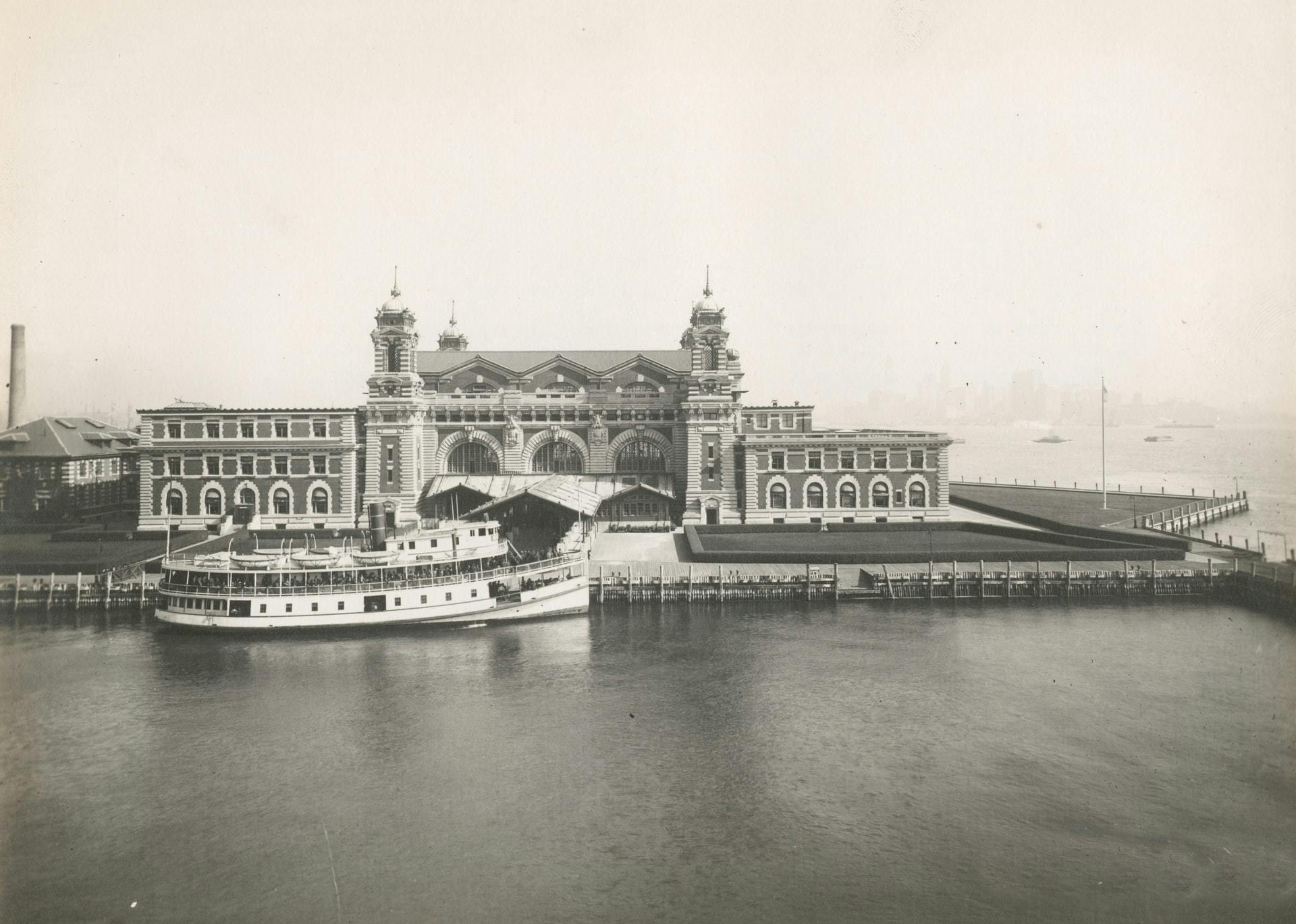
Ever wonder what it was like for new immigrants to see the Statue of Liberty and step foot on American soil for the first time?
Now students can experience it for themselves with this virtual tour , a collaboration between Scholastic and the National Park Service. They’ll learn the importance of immigration in the history of the United States and hear real-life stories about the people who came looking for a better life.
After students watch the video, they can click through this interactive map with facts and stories about the people who came through Ellis Island.
19. Explore China's forests
In this online tour, students can explore the natural habitats of pandas in the forests of China . They’ll discover how the panda’s home plays a role in understanding our world, learn about local conservation efforts and see the big-picture view of how these vast forests fit into our understanding of nature and climate change.
Plus, this program also comes with a handy Teacher Guide for you to use in lesson planning!
20. Bundle up in the Arctic tundra

Take a virtual field trip all the way up north to the tundra! Discovery Education’s tundra programs for elementary, middle and high school students cover the natural habitat of polar bears, plus their activities and migration patterns.
This virtual tour comes with instructional activities and classroom tie-ins, so you can be sure students are getting a productive learning experience.
21. Go spelunking in the world's largest cave
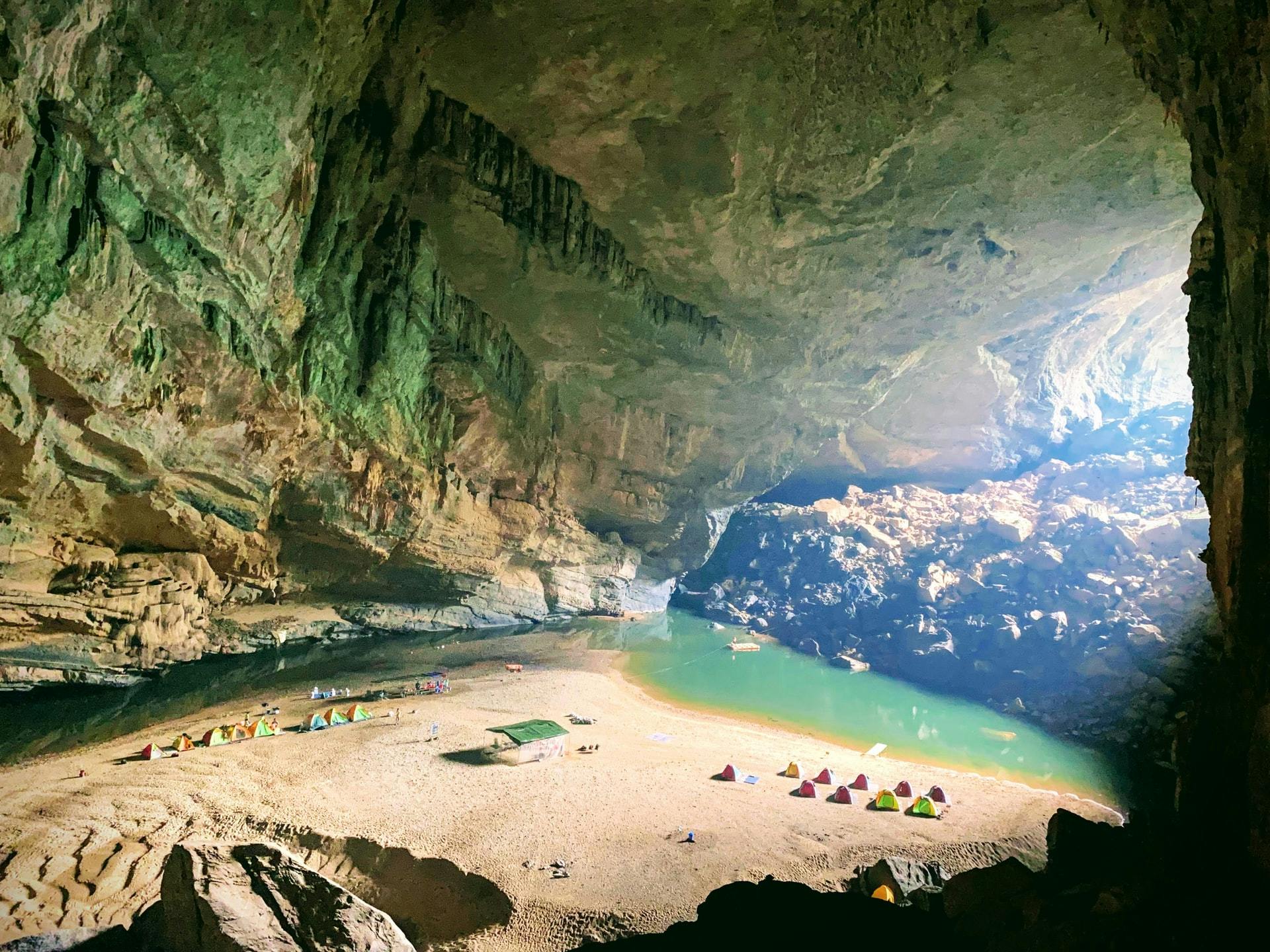
Travel through Vietnam’s Son Doong, the world’s largest cave . First explored by researchers in 2009, this cave is up to 200 meters tall in some areas and even has its own jungle inside.
It’s estimated that the total length of the cave system is over 200 kilometers, and with this National Geographic tour students can explore to their heart’s content. High definition pictures and helpful facts mean that not only is this an awe-inspiring trip for students, but it’s also educational!
Because the cave is ecologically sensitive, only a certain number of tourists are allowed to visit each year. This virtual tour is a great way for kids and adults to experience the wonder up close!
22. Browse the Louvre
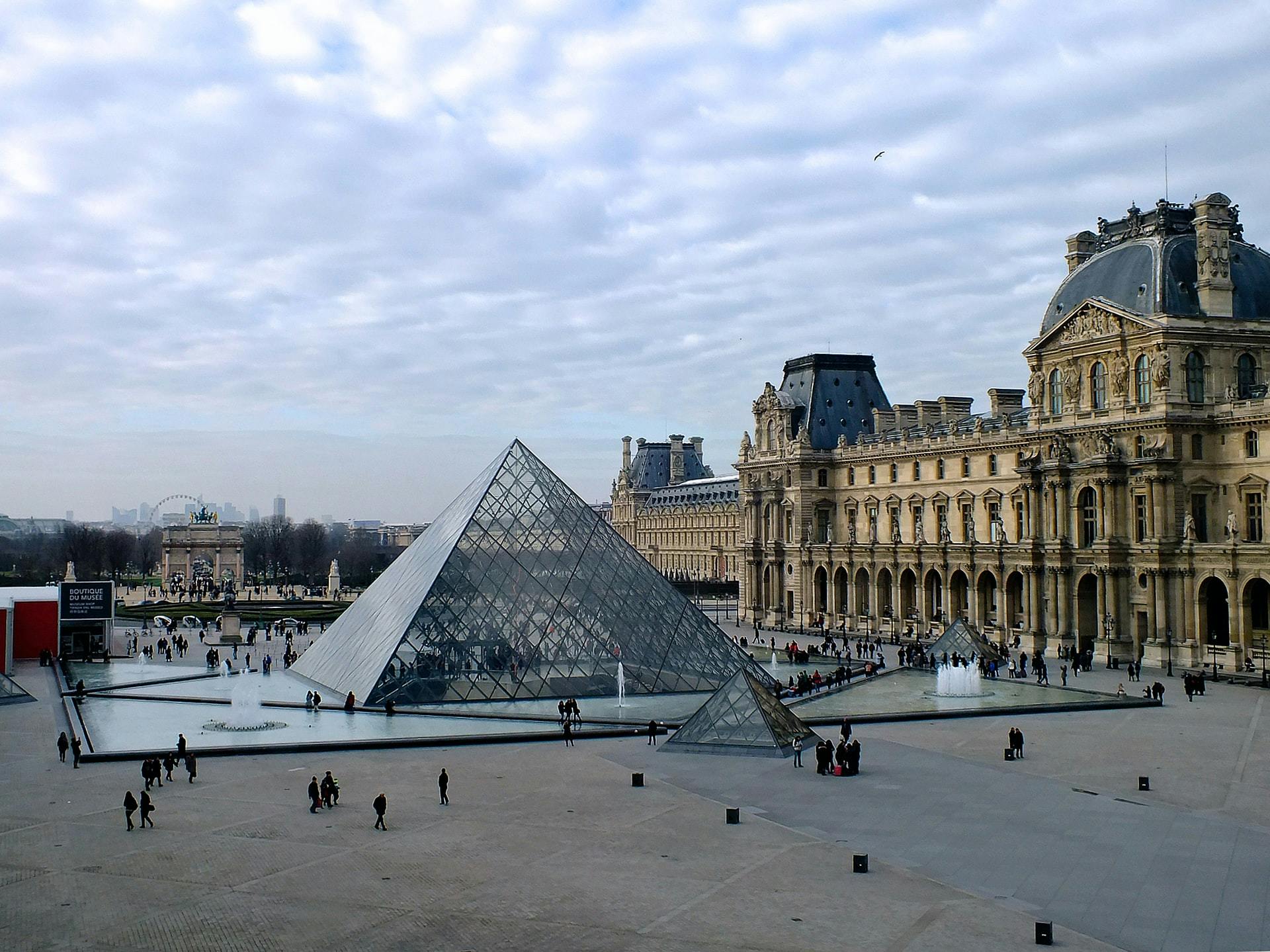
Take your students on a quick trip to Paris where you can explore the architecture and art of the Louvre without the crowds.
Plus, the Louvre also offers Louvre Kids , as well as a Mona Lisa Beyond the Glass virtual app experience where users can learn how Leonardo da Vinci created his most well-known masterpiece.
From kindergarten to high school, virtual field trips are a great way to get students excited about learning. And if you’re homeschooling , they’re the perfect way to get real-world experience without leaving the house!
To get the most out of the experience, keep these tips in mind:
- Ask students what they’re interested in exploring
- Look for virtual experiences that fit into your lesson plan for maximum impact
- Search for supplementary resources like teacher guides and discussion questions
- Try out the virtual tour first to make sure it’s worth it and to avoid any unpleasant technical glitches
- Use virtual field trips at the beginning of a unit to introduce students to new concepts, or at the end as a reward and wrap-up activity
Be sure to follow up with students and see what they liked the most. Then, harness that excitement for your next lesson or activity!
Prodigy Math Game is an adaptive math platform where students can explore a world filled with adventure, excitement and rewards — all for practicing math! While they’re having a blast answering questions and completing epic quests, Prodigy’s free teacher tools help you align their learning to your classroom lessons.
Sign up for your free teacher account today!
- London Walks
- Museums and Galleries
- Day Tours From London
- Overnight Tours
- Stonehenge Tours
- Military Tours
- Rambling Tours
- Virtual Tours of Britain
- Paris Day Tours
- Day Tours from Paris
- Overnight Tours of France
- Normandy Tours
- Airport Transfers
- Rome Day Tours
- Day Tours from Rome
- Overnight Tours of Italy
- Special Interest Tours
- Virtual Tours
Post Office Tower
Post Office Tower © British Tours Ltd. Panoramic photography by Jason Doll-Steinberg
To view the panorama drag the image with your mouse.
Share with friends
Building commenced on The Post Office Tower in 1961 and was opened by Prime Minister Harold Wilson in 1965. The Tower (now known as the BT Tower) was designed as the hub in a rapidly growing television and telecommunications network.

Tours you might be interested in
Private london tour.

British Tours Blog
Read our blog for news and special interest touring ideas!
Mike picked us up in London at 4:30 AM and drove us to Stonehenge so that we would be in the inner circle at sunrise. It is there that I asked my one true love to marry me. (She said yes!)
Frederick Lowther
Who is your Guide?
Our guides are personable educated men and women, chosen for their knowledge, special interests, backgrounds and personality. They will collect you by car from any central London location and guide you inside places of historic importance

Follow us on our journey
- Watch Videos
- Meet Our Expert Guests
- Inside An Architect’s Office
- Showroom Feature: Focus on Fulton
- Shop the Marketplace
- In-Depth Product Profiles
- Chair Reviews
- Product Roundups
- Expert Insights
- Tips & Trends

Sign Up For Our Newsletter
- Advertise With Us

Popular Articles
The adaptive workplace: reducing friction in the ever-changing work experience, what workplace design can learn from higher education facilities, the iphone-ified office: transforming the workspace to meet employee demands, reimagining workplaces for a frictionless future: introducing ‘the hive’ concept, chair of the month.

From tripod positioning to maximizing natural light, these seven tips explain how to optimize your virtual office tour.
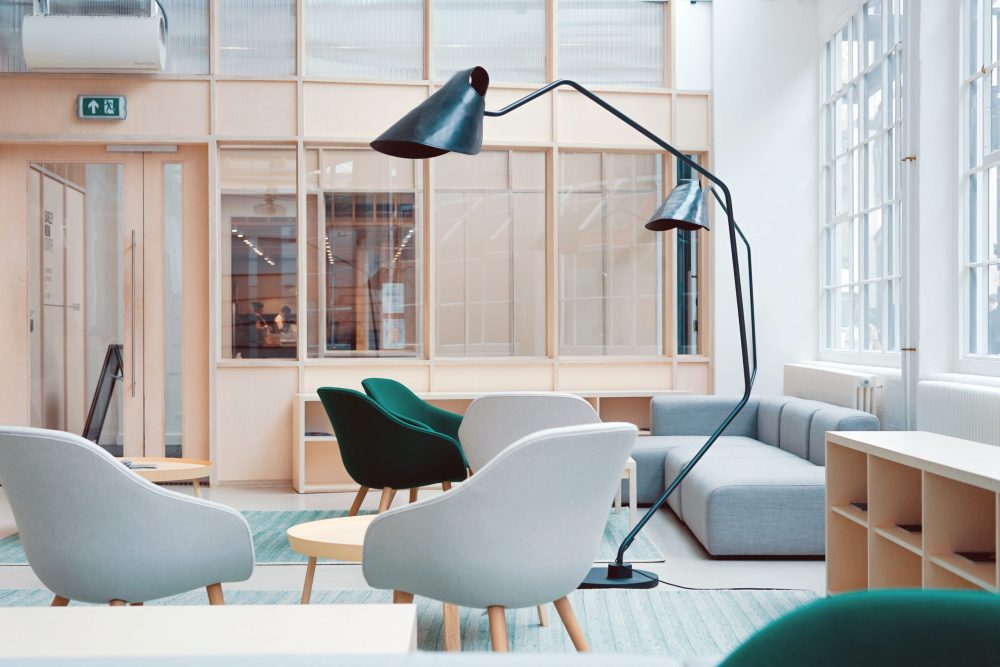
This article was originally published by Allwork.Space .
Virtual office tours are experiencing a boom, for obvious reasons. But the savviest operators were leveraging this technology way before the pandemic hit.
Known in the marketing world as ‘sticky content’, virtual tours engage prospective members by enabling them to experience your location without leaving your website. Sure, they’ll likely want to come see it in person too, but it means they will do so as a more ‘qualified’ prospect.
What is a Virtual Tour?
A virtual tour, also referred to as a 360 panoramic tour or 3D virtual tour, shouldn’t be confused with a video tour. Video tours are a very effective marketing tool but they differ in that they only allow website visitors to see the point of view of the presenter or videographer.
Virtual office tours, on the other hand, provide visitors with control over their perspective, enabling them to zoom in on features and explore at their own pace.
Panoramic tours are created using a series of photographs or videos taken from one vantage point. The camera’s lens rotates around the ‘no parallax point’ – the specific point at the back of the lens where the light converges.
There are lots of companies out there who can create a virtual office tour for you, so don’t be afraid to outsource. If you decide to have a go yourself, you’ll need a camera which can shoot 360° panoramic footage remotely and virtual tour software (or an app).

How to Optimize Your 360 Virtual Office Tour:
1. plan your virtual office tour shots.
Compose a list of the areas in your workspace you’d like to include in your virtual tour – private offices, coworking areas, breakout spaces, kitchens, roof terraces, etc. Find a vantage point in each area that will enable you to capture all of its features. You could use the centre of the room. Failing that, select a more convenient spot and mark it with tape.
2. Prepare each space
Once you’ve planned the camera positions in each area, it’s time to prepare the room for the recording. Remove anything that will obstruct the camera’s view, tidy up by organising desks and chairs neatly and take anything that might distract the viewer out of the shot. People like to work in environments with lots of natural light, so be sure to open any blinds.
3. Level your tripod
For image consistency and to ensure straight angles, you’ll need to make sure your tripod is level in every shot. Your tripod might come with its own spirit level – simply adjust the legs until the bubble is in the middle. If it doesn’t, you can download a leveling app using your smartphone.
4. Practice your shots
Practice makes perfect, as the old saying goes. Before uploading your content, take practice shots of each part of your workspace and analyse them. The first thing to look out for is whether you can see your camera’s reflection in windows or mirrors.
If so, you’ll need to reposition your camera. Likewise, check for any distractions or darkness that will compromise the quality of your virtual office tour.
5. Take your photos
Once you’ve demo-ed your technology and framing, it’s time to get stuck in. Find the vantage point that you’ve marked out in each room, set up the tripod and take the pictures. You can check images as you go and retake photos before moving to the next area. It’s better to have a selection to choose from than too few.
6. Upload your photos
Use your chosen virtual tour software or app to connect the images together and complete your virtual office tour. You’ll have to upload your images and follow the prompts. Lots of programs enable you to optimize the viewers experience by adding features such as interactive links, audio descriptions, floor plans and music.
7. Share your virtual office tour
Embed the virtual tour into your website and share it across your social media channels. You can share a link to it in emails to any prospective members that come your way and you can also generate a QR code that links directly to the virtual tour when scanned.
Virtual Office Tour Examples
Staying up-to-date with the latest marketing and technology trends is important if you want to remain relevant in a competitive landscape.
Don’t be afraid to experiment and ask your peers for guidance when needed. Before embarking on your own virtual office tour journey, take a look at how other operators are utilizing the technology: check out Mindspace in Bucharest and Knotel , in London, for instance.
- Allwork.Space
- office photography
- office video
- tips and trends
- virtual office tour
More Articles
Revolutionizing workplace dynamics: creating a welcoming destination for all, the importance of connecting rto strategies with dei to meet the needs of diverse demographics, the power of pet-friendly workplaces, leave a reply cancel reply.
Save my name, email, and website in this browser for the next time I comment.
Latest Articles
Blending health and workplace at tongrentang health’s beijing office, offices aren’t ready to support hybrid workers, cisco survey shows, the technology perspective with adam riggs episode 9.1, seamless signals: navigating workplace interactions with ease.

Post Office Virtual Tour
Newsletter Signup
Your Email:
Please prove you are human by selecting the house .
- Location & Directions
- Batsto Committee
- Volunteer Opportunities
- News & Articles
- Drone Videos
- AGBS Vendor Registration Forms
- Batsto Village
- Post Office
- Online Store

Tour Details
Moscow metro tour: architectural styles of the subway.

Duration: 2 hours
Categories: Culture & History, Sightseeing
This metro tour of Russia’s capital and most populous city, Moscow, is your chance to get a unique insight into the beautiful and impressive architecture of the city's underground stations. Admire their marble walls and high ceilings representing Stalin's desire for glory after World War 2, and see first-hand how the interiors change with the rise of new political eras. Your guide will lead you through the complex network, which is one of the most heavily used rapid transit systems worldwide, with over two billion travelers in 2011.
Opened in 1935, Moscow’s underground system, now 190 miles (305 km) long with 185 stations, is today one the largest and most heavily used rapid transit systems in the world. On this Moscow metro tour, discover the impressive architecture of Moscow’s underground stations and learn how they reflect the Soviet era.
Getting around by metro, your local guide will take you through parts of Moscow’s infamous history. Stop at stations built during the time of the USSR (Soviet Union) that are praised as one of the most extravagant architectural projects from Stalin’s time. After World War 2, he was keen on establishing Stalinist architecture to represent his rising regime and a recognized empire. Learn how when his successor started the de-Stalinization of the former Soviet Union in 1953, the extravagancy of the architecture was toned down.
Discover how the unique character of each station reflected several different eras. While stations like Kievskaya and Slavyansky Bulvar have pompous halls and high stucco ceilings brimming with extravagant decorations, those built later, like Volzhskaya, are lightly adorned with sparse furnishings. Architect Alexey Dushkin and painter Alexander Deyneka were just two of the many artists who made these magnificent landmarks possible.
Revel in Moscow's glory days, as well as the years of scarcity, on this fascinating Moscow metro experience. Conclude your tour at one of the central stations in Moscow. If you're lucky, you may even find the secret entrance to the unconfirmed Metro-2, a parallel underground system used by the government -- a mystery which has neither been denied nor confirmed today.
Nearby tours

Soviet-Era Walking Tour in Moscow: Lubyanka Square and the Gulag History Museum
If you love history, would like to know more about Russia’s past, or just want to take an interesting walk, book this guided Moscow walking tour of Soviet-era sites. With your expert guide, walk through Lubyanka Squ...

Walking Tour of Moscow's Kolomenskoye Estate
On this walking tour through the Kolomenskoye Estate in Moscow, immerse yourself in Russia’s interesting royal history. Walk around the UNESCO World Heritage-listed Ascension Church, built in 1532, and enter the Hou...

Moscow Cultural Walking Tour: Red Square, Kitay-Gorod and St Basil's Cathedral
Take a guided walking tour of Moscow's cultural highlights, like the beautiful UNESCO World Heritage-listed Red Square, said to be the central square of Russia. Walk through the adjoining district Kitay-Gorod, one of ...

Kremlin Grounds, Cathedrals and Patriarch's Palace Tour from Moscow
A great three hour tour exploring the Kremlin Grounds, Cathedrals and Patriarch's Palaces in Moscow! The small city in the center of Moscow, once the residence of Czars and Patriarchs, contains Russia's main cathedra...

Moscow City Tour
The Moscow City Tour covers all the highlights and most beautiful places in the enchanting Russian capital. The tour begins with a stop at the Red Square and St. Basil's Cathedral, the architectural masterpiece and w...
Culture Shock Rating
We have a wide range of tours designed to give you an insight into the destination you're travelling in and there is something for everybody. The culture shock ratings considers the destination visited, transport used, activities undertaken and that "Wow, I'm really not at home now!" factor. While generalisations are always tricky, a summary of our gradings is as follows…
This is the least confronting of our tour range. Transport used on the trip is either private or a very comfortable public option, the activities included are usually iconic sites and locations that are not all too confronting.
The tour can include a mix of private and public transport providing a level of comfort that is slightly below what you would experience at home. Sites visited are usually iconic sites, tours can also include market visits, visits to communities etc that provide the traveller with a fantastic insight into destination.
Expect to rough it for parts of this tour, whether it's a packed public bus where you are forced to stand, a visit to a local market, a local community, you are sure to have an experience that is very different from what you're used to at home.
The comforts of your home town and the environment you are used to are more of a rarity. Expect some challenging transport options, visits to local sites and areas that don't resemble anything at home.
You're out there in the global community! You are likely to be exposed to the elements, travel in whatever means of transport is available and basically take it as it comes, whatever comes! It can be tough.
Physical Rating
Our physical rating gives you an idea of how much huffing and puffing you can expect on the tour. While generalisations are always tricky, a summary of our gradings is as follows…
These tours have very limited physical activity. Usually climbing in and out of the transport provided, walking through sites, markets etc included in the itinerary.
These tours have a bit of physical activity but nothing that should challenge you too much. This could be climbing on and off public transport through to a walk through the destination you're travelling in, they can include walking only tours or a combination of walking and transport.
These tours involve a bit of physical activity from walking up and down hills in the destination you're travelling in or the surrounding areas. Climbing on and off local transport or riding a bike up to 30 kms along predominantly flat terrain or jumping in a kayak for a gentle paddle on flat water.
These Tours will provide you with some solid physical activity. Whether its bike riding, walking, trekking, kayaking or riding on public transport you will need to have a good level of fitness to enjoy this tour.
Be prepared for some serious physical activity. These tours are our most challenging and involve some serious walking, hiking or bike riding. Can involve step climbs by foot or pedal and some challenging public transport options in the destination you are travelling.
Luxury Rating
Some trips are like a stroll on the beach, while others have you trekking alpine passes. Some of you thrive on camping out on the savannah, while others may prefer a hot shower and a comfortable bed in a lodge. Follow the grading systems below to find the right trip for you.
To help you choose the trip that's right for you, we've broken all of our trips down into four service levels. Measuring the comfort level of the accommodation and transport. So whether you're travelling on a budget and want to save money by using public transport, or prefer upgraded accommodation and are happy to pay a little more, then we have a level for you.
This is grassroots travel at its most interesting
Authentic experiences with some of the comforts of home
For those who like to travel in comfort
All the unique experiences wrapped up with a gold ribbon

- TripAdvisor
- Testimonials
- Travel Tips
Moscow Metro
Introduction of moscow subway system (metro).
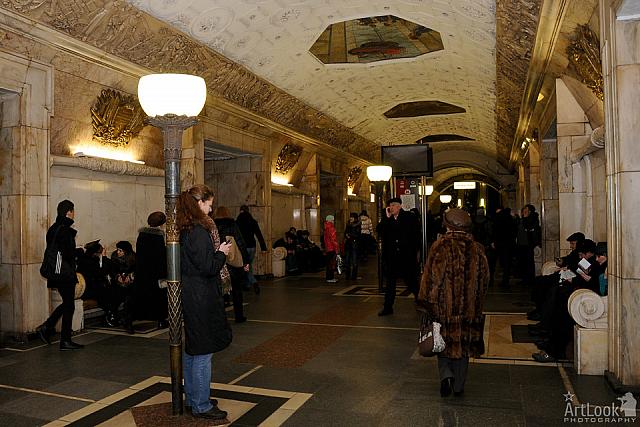
Nowadays the Moscow Metro has 12 lines, light subway and monorail. All stations are unique and beautiful in their own way. Unfortunately, in order to visit them all, you need to spend many days. I invite guests to visit the ones that have the greatest cultural and historical interest from my point of view. Among them are the Revolution Square, Arbatskaya, Kievskaya (Arbatsko-Pokrovskaya Line № 3); Kievskaya, Belarusskaya, Novoslobodskaya, Komsomolskaya (the Ring line number 5). Let us dwell a bit on each.
Arbatsko-Pokrovskaya Line
Subway station "revolution square".
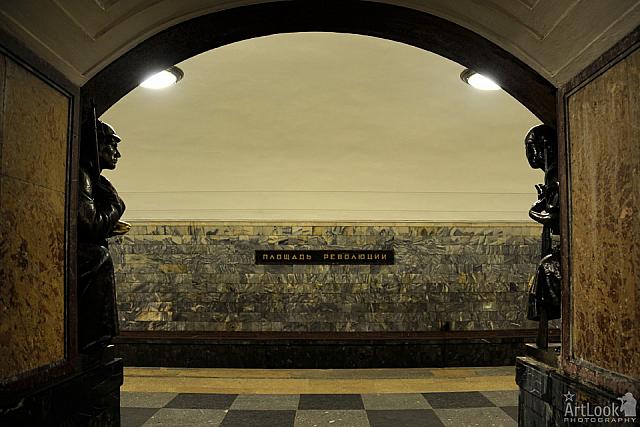
Most recently - in the year 2008-2010 – the Eastern lobby was renovated. Because of the terrorist attacks in the Moscow subway that took place several hours before the planned opening of the East lobby after renovation, the solemn part of the event was canceled.
Subway station Arbatskaya
Subway Arbatskaya is located on the same subway line as the station "Revolution Square." It was founded in 1953. It received the name in honor of the Arbat Street. It has one ground lobby (Western). Initially, the lobby was in a separate building, but the new building of the General Staff of the Ministry of Defense started, the lobby appeared to be in its atrium. The old exits were bricked up; a new entrance was built into the building of General Staff of the street Vozdvizhenka. There is a huge frame with a missing portrait in the ground lobby - until mid-1950 there was a portrait of Stalin. According to some reports, it survived, but closed with plaster.
The lobby was restored and partially reconstructed in 2007-2008.
The depth of the station is 41 meters.
Pylons are finished with red marble at the bottom, decorated with bouquets of flowers made from ceramics. The floor is laid out with gray granite. The walls lined with glazed ceramic tiles, white top and black bottom. The station hall is illuminated by massive bronze chandeliers in the form of rings.
Subway station Kievskaya
There are several subway stations "Kievskaya" in Moscow, located on different branches. This name is quite popular. It comes from the capital of Ukraine - one of Russia's nearest neighbors - the city of Kiev. The name is fully consistent with the idea of the subway station. The interior the station devoted to Soviet Ukraine and the reunification of Ukraine and Russia. The station is decorated with a large number of paintings .Twenty four murals depicting workers of Soviet Ukraine are placed on the arch above the pylons. The wall from the side of platform also contains frescos, mainly with images of fantastic plants. Pylons are decorated with light marble and additionally decorated with colorful ceramic cornice. The butt of the station has a large mosaic, depicting festivities to celebrate the 300 anniversary of the reunification of Ukraine and Russia.
Opened in 1953, this subway station for a long time was the final (1953-2003).
The station has one lobby, combined with the station ring line and located in the building of the Kievskaya railway station. The diameter of the central hall station is 9.5 m, the diameter of side one is 8.5 m. The depth of the station is 38 meters.
= Ring Line Subway =
It opened in 1954. The station received its name after the Kiev station, and locked the Ring line. During the construction of the station many projects were proposed, but the victory in the competition won the Kiev architects who made the construction of the station. It is the only station of the Ring Line which is not located in the Central Administrative District of Moscow.
The station has a pylon structure. Eighteen pylons are decorated with mosaic panels of glazes, decorated on the theme of Ukrainian history and friendship between the Ukrainian and Russian peoples, which started in the mid-17 century.
On the front wall of the central hall of the station a large panel with molding in the form of flags and a mosaic portrait of Lenin in the center are located. There are lines of the Soviet national anthem around the portrait, and under the portrait - the words of Lenin. One of the ways out of the station was designed by French architects modeled on the Paris Subway in 2006.
At one of the mosaics – “The Struggle for Soviet power in Ukraine "- modern passengers observe a mobile phone and PDA in the hand of one of the guerrillas, and on his knees - a laptop. In fact, he uses a field telephone, which was really a heavy thing (guerrillas holds it in two hands), and thing that people see a laptop is the lid of a box with a telephone. However, these phones have begun to produce only in the second half of the 20-ies of XX century. We must assume that the mosaic depicts a foreign field telephone transmitter.
Subway station Belorusskaya
The founded of the station was in 1952. It received the name after the Belarusian railway station nearby. The station has two ground-based lobbies. The Western one goes to Tverskaya Zastava. It is decorated with beautiful carvings. The Eastern one leads to Butyrskiy shaft and Forest Street. The Eastern lobby is known for its majolica panels.
The station Belorusskaya is located at a depth of 42.5 m below ground. The diameter of the central hall is 9.5 meters.
Pylons are faced with light marble. The walls lined with white ceramic tiles, the floor is covered with ceramic tiles, gray, white and red colors. Lamps placed on pylons, in the form of vases made of glass and marble. The theme of decoration is economy and culture of Belarus. Decorative pattern on the floor repeats the theme of traditional Belarusian embroidery. Decorations of the ceiling consist of stucco decorations and 12 mosaic panels depicting the life of the Belarusian people.
Subway station Novoslobodskaya
Built in 1952, Subway station Novoslobodskaya got its name from the eponymous street: the station is located at the very beginning of it.
Novoslobodskaya is pylon station of deep foundation (its depth is 40 m) with three arches.
Exit to the street is through the ground lobby with column portico, located on Novoslobodskaya Street lined with gray marble. Pylons of the underground station are faced with marble from the Urals. Thirty two spectacularly illuminated stained-glasses, placed inside the pylon and bordered by steel and gilt brass are splendid decoration of the station. A remarkable mosaic "World Peace" is located at the end of the central hall. The picture depicts a happy mother with a baby in her arms; it was the face of Stalin at the picture: the child gave a hand to him. But in times of Khrushchev the face of the former leader of USSR was removed from the panel. The walls are lined with bright marble; floor is covered with white and black granite slabs, placed in a checkerboard pattern.
Subway station Komsomolskaya
The station was built in 1952 and named in honor of the Komsomolskaya Square, which is situated nearby.
This subway station is the station of the deep bedding. Its depth is 37 meters. The station has column and three- arched design. Cast iron decoration is used in the construction, monolithic slab used as a tray for a collapsible finishing. The length of the boarding hall is 190 meters; width of it is 10 meters. There are 68 octagonal columns at station.
The main theme of the interior of the station is the fighting of the Russian people for their independence. The ceiling is decorated with eight station mosaic mural made from glazes and precious stones. Six of them represent the Alexander Nevsky, Dmitry Donskoy, Kuzma Minin and Dmitry Pozharsky, Alexander Suvorov and Mikhail Kutuzov, the Soviet soldiers and officers at the walls of the Reichstag.
Two other panels, depicting Stalin ("Victory Parade" and "Presentation of the Guards Banner"), were replaced after the dethronement of Stalin's personality cult in 1963. New panels depict Lenin's speech in front of the Red Guards and the Motherland on the background of the Kremlin's Spasskaya Tower.
The yellow ceiling is decorated with mosaic and moldings. The hall is illuminated by massive chandeliers hanging between the panels; platforms are illuminated with smaller chandeliers. The columns are decorated with marble capitals and trimmed with light marble, as well as the wall station. The floor is laid with pink granite. There is a bust of Lenin at the end of the hall. At the opposite end of the escalator is a large Florentine mosaic of the Order of Victory with red banners on the background. The ground lobby of the station is decorated with bas-reliefs.
In conclusion...
Each of the stations of the Moscow subway is attractive and interesting in its own way. Each has its own long and fascinating history and is beautifully decorated. The Moscow subway is a whole world, which can be talking about for hours. I suggest you short - no more than one hour and a half - and a fascinating journey through the world of the Moscow subway. The pleasure is guaranteed!
Sculpture Park "Art Muzeon"
Mausoleum and necropolis.
- Bombing in Moscow Metro On March 29, 2010, another tragic event happened in Moscow that shocked not only the citizens of the Russian Federation, but also many people from countries that oppose the threat of terrorism. In the early morning rush hour, two women bearing suicide weapons blasted themselves in the subway trains of the Moscow Metro.
- The Best Redesign of Moscow Metropolitan Map 2013 Russia's leading internet and graphic design agency has won an online vote for the best redesign of the Moscow Metro map. Art. Lebedev Studio is a design company in Russia, founded in 1995 by Artemy Lebedev. They redrew the Moscow Metro map for a second time in three years, with even cleaner graphics and a raft of new details and won more than 50% of the online vote.
Related Photos:

About Me in Short

My name's Arthur Lookyanov, I'm a private tour guide, personal driver and photographer in Moscow, Russia. I work in my business and run my website Moscow-Driver.com from 2002. Read more about me and my services , check out testimonials of my former business and travel clients from all over the World, hit me up on Twitter or other social websites. I hope that you will like my photos as well.
See you in Moscow!
- Russian Visa Invitation Letter Support
- Moscow Airports: A Virtual Guide (Written by a Real-life Guide)
- Exploring Moscow for the First Time? A Personal Guide is What You Need!
- Don’t miss a great chance of seeing fairy-tale town of Suzdal
Recently Posted:

Innovation Center Skolkovo – Territory of the Future
Develompment of the Skolkovo Innovation Center, the modern scientific and technological innovative complex located in the Mozhaysky district of the Western Administrative District of Moscow of an area of approximately 400 hectares.
Featured Photo Albums
- Picture of a Day
- Moscow Must-See Sights & Attractions
- Tour Guide and Driver Portfolio
- Photographs of Dear Clients & Friends
Last Published Photo:
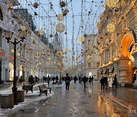
Lights of Nikolskaya Street in Winter Twilight
People walking up and down Nikolskaya street in winter twilight decorated with LED creating a festive atmosphere in any season. The picture is taken near GUM building (at the right) and Red Square.
Take One of Exciting Tours:
- Moscow Highlights
- Discovering the Golden Ring of Russia
- Arts & Culture Tours
- Night Tour of Moscow
Related Information:
- Terms and Conditions
- Recommended Tour Guides
- Useful Links

Claudia Looi
Touring the Top 10 Moscow Metro Stations
By Claudia Looi 2 Comments

Komsomolskaya metro station looks like a museum. It has vaulted ceilings and baroque decor.
Hidden underground, in the heart of Moscow, are historical and architectural treasures of Russia. These are Soviet-era creations – the metro stations of Moscow.
Our guide Maria introduced these elaborate metro stations as “the palaces for the people.” Built between 1937 and 1955, each station holds its own history and stories. Stalin had the idea of building beautiful underground spaces that the masses could enjoy. They would look like museums, art centers, concert halls, palaces and churches. Each would have a different theme. None would be alike.
The two-hour private tour was with a former Intourist tour guide named Maria. Maria lived in Moscow all her life and through the communist era of 60s to 90s. She has been a tour guide for more than 30 years. Being in her 60s, she moved rather quickly for her age. We traveled and crammed with Maria and other Muscovites on the metro to visit 10 different metro stations.

Arrow showing the direction of metro line 1 and 2

Moscow subways are very clean
To Maria, every street, metro and building told a story. I couldn’t keep up with her stories. I don’t remember most of what she said because I was just thrilled being in Moscow. Added to that, she spilled out so many Russian words and names, which to one who can’t read Cyrillic, sounded so foreign and could be easily forgotten.
The metro tour was the first part of our all day tour of Moscow with Maria. Here are the stations we visited:
1. Komsomolskaya Metro Station is the most beautiful of them all. Painted yellow and decorated with chandeliers, gold leaves and semi precious stones, the station looks like a stately museum. And possibly decorated like a palace. I saw Komsomolskaya first, before the rest of the stations upon arrival in Moscow by train from St. Petersburg.
2. Revolution Square Metro Station (Ploshchad Revolyutsii) has marble arches and 72 bronze sculptures designed by Alexey Dushkin. The marble arches are flanked by the bronze sculptures. If you look closely you will see passersby touching the bronze dog's nose. Legend has it that good luck comes to those who touch the dog's nose.

Touch the dog's nose for good luck. At the Revolution Square station

Revolution Square Metro Station
3. Arbatskaya Metro Station served as a shelter during the Soviet-era. It is one of the largest and the deepest metro stations in Moscow.

Arbatskaya Metro Station
4. Biblioteka Imeni Lenina Metro Station was built in 1935 and named after the Russian State Library. It is located near the library and has a big mosaic portrait of Lenin and yellow ceramic tiles on the track walls.

Lenin's portrait at the Biblioteka Imeni Lenina Metro Station

5. Kievskaya Metro Station was one of the first to be completed in Moscow. Named after the capital city of Ukraine by Kiev-born, Nikita Khruschev, Stalin's successor.

Kievskaya Metro Station
6. Novoslobodskaya Metro Station was built in 1952. It has 32 stained glass murals with brass borders.

Novoslobodskaya metro station
7. Kurskaya Metro Station was one of the first few to be built in Moscow in 1938. It has ceiling panels and artwork showing Soviet leadership, Soviet lifestyle and political power. It has a dome with patriotic slogans decorated with red stars representing the Soviet's World War II Hall of Fame. Kurskaya Metro Station is a must-visit station in Moscow.

Ceiling panel and artworks at Kurskaya Metro Station

8. Mayakovskaya Metro Station built in 1938. It was named after Russian poet Vladmir Mayakovsky. This is one of the most beautiful metro stations in the world with 34 mosaics painted by Alexander Deyneka.

Mayakovskaya station

One of the over 30 ceiling mosaics in Mayakovskaya metro station
9. Belorusskaya Metro Station is named after the people of Belarus. In the picture below, there are statues of 3 members of the Partisan Resistance in Belarus during World War II. The statues were sculpted by Sergei Orlov, S. Rabinovich and I. Slonim.

10. Teatralnaya Metro Station (Theatre Metro Station) is located near the Bolshoi Theatre.

Teatralnaya Metro Station decorated with porcelain figures .

Taking the metro's escalator at the end of the tour with Maria the tour guide.
Have you visited the Moscow Metro? Leave your comment below.
January 15, 2017 at 8:17 am
An excellent read! Thanks for much for sharing the Russian metro system with us. We're heading to Moscow in April and exploring the metro stations were on our list and after reading your post, I'm even more excited to go visit them. Thanks again 🙂
December 6, 2017 at 10:45 pm
Hi, do you remember which tour company you contacted for this tour?
Leave a Reply Cancel reply
You must be logged in to post a comment.
Please go to the Instagram Feed settings page to create a feed.
Moscow Metro Tour
- Page active

Description
Moscow metro private tours.
- 2-hour tour $87: 10 Must-See Moscow Metro stations with hotel pick-up and drop-off
- 3-hour tour $137: 20 Must-See Moscow Metro stations with Russian lunch in beautifully-decorated Metro Diner + hotel pick-up and drop off.
- Metro pass is included in the price of both tours.
Highlight of Metro Tour
- Visit 10 must-see stations of Moscow metro on 2-hr tour and 20 Metro stations on 3-hr tour, including grand Komsomolskaya station with its distinctive Baroque décor, aristocratic Mayakovskaya station with Soviet mosaics, legendary Revolution Square station with 72 bronze sculptures and more!
- Explore Museum of Moscow Metro and learn a ton of technical and historical facts;
- Listen to the secrets about the Metro-2, a secret line supposedly used by the government and KGB;
- Experience a selection of most striking features of Moscow Metro hidden from most tourists and even locals;
- Discover the underground treasure of Russian Soviet past – from mosaics to bronzes, paintings, marble arches, stained glass and even paleontological elements;
- Learn fun stories and myths about Coffee Ring, Zodiac signs of Moscow Metro and more;
- Admire Soviet-era architecture of pre- and post- World War II perious;
- Enjoy panoramic views of Sparrow Hills from Luzhniki Metro Bridge – MetroMost, the only station of Moscow Metro located over water and the highest station above ground level;
- If lucky, catch a unique «Aquarelle Train» – a wheeled picture gallery, brightly painted with images of peony, chrysanthemums, daisies, sunflowers and each car unit is unique;
- Become an expert at navigating the legendary Moscow Metro system;
- Have fun time with a very friendly local;
- + Atmospheric Metro lunch in Moscow’s the only Metro Diner (included in a 3-hr tour)
Hotel Pick-up
Metro stations:.
Komsomolskaya
Novoslobodskaya
Prospekt Mira
Belorusskaya
Mayakovskaya
Novokuznetskaya
Revolution Square
Sparrow Hills
+ for 3-hour tour
Victory Park
Slavic Boulevard
Vystavochnaya
Dostoevskaya
Elektrozavodskaya
Partizanskaya
Museum of Moscow Metro
- Drop-off at your hotel, Novodevichy Convent, Sparrow Hills or any place you wish
- + Russian lunch in Metro Diner with artistic metro-style interior for 3-hour tour
Fun facts from our Moscow Metro Tours:
From the very first days of its existence, the Moscow Metro was the object of civil defense, used as a bomb shelter, and designed as a defense for a possible attack on the Soviet Union.
At a depth of 50 to 120 meters lies the second, the coded system of Metro-2 of Moscow subway, which is equipped with everything you need, from food storage to the nuclear button.
According to some sources, the total length of Metro-2 reaches over 150 kilometers.
The Museum was opened on Sportivnaya metro station on November 6, 1967. It features the most interesting models of trains and stations.
Coffee Ring
The first scheme of Moscow Metro looked like a bunch of separate lines. Listen to a myth about Joseph Stalin and the main brown line of Moscow Metro.
Zodiac Metro
According to some astrologers, each of the 12 stops of the Moscow Ring Line corresponds to a particular sign of the zodiac and divides the city into astrological sector.
Astrologers believe that being in a particular zadiac sector of Moscow for a long time, you attract certain energy and events into your life.
Paleontological finds
Red marble walls of some of the Metro stations hide in themselves petrified inhabitants of ancient seas. Try and find some!
- Every day each car in Moscow metro passes more than 600 km, which is the distance from Moscow to St. Petersburg.
- Moscow subway system is the 5th in the intensity of use (after the subways of Beijing, Tokyo, Seoul and Shanghai).
- The interval in the movement of trains in rush hour is 90 seconds .
What you get:
- + A friend in Moscow.
- + Private & customized Moscow tour.
- + An exciting pastime, not just boring history lessons.
- + An authentic experience of local life.
- + Flexibility during the walking tour: changes can be made at any time to suit individual preferences.
- + Amazing deals for breakfast, lunch, and dinner in the very best cafes & restaurants. Discounts on weekdays (Mon-Fri).
- + A photo session amongst spectacular Moscow scenery that can be treasured for a lifetime.
- + Good value for souvenirs, taxis, and hotels.
- + Expert advice on what to do, where to go, and how to make the most of your time in Moscow.
Write your review

IMAGES
VIDEO
COMMENTS
post office - a U.S. government building where mail is sorted and stamps are sold. Most post offices have an American flag out front. route - the streets or roads where a particular letter carrier delivers the mail every day. rural mail carriers - postal workers who deliver mail in the country. They drive their own cars and put mail into ...
Explore LearningMedia Resources by Subject. Special Delivery! Join Penny and the KidVision VPK kids at a United States Post Office! Learn about addresses, stamps, sorting mail, and mail carriers. This field trip is top priority!
Miss Tina will help you learn about the United States Postal Service with an inside look at the Clover Post Office! She'll introduce you to Rick, a mail carr...
Special Delivery! Join Penny and the KidVision Pre-K Kids at a United States Post Office! Learn about addresses, stamps, sorting mail, and mail carriers. Thi...
The building opened in 1914 as the D.C. city post office and served as the central hub for all mail going in and out of the nation's capital. It was built adjacent to Union Station because all mail leaving or coming into major cities travelled by train. ... Virtual Tour 360-degree panoramas lead you through the galleries of the museum. Learn ...
Get an insight into what Post Office's head office in London looks like.
The Post Office Tour Preparation. Here are some key things you'll want to know before you set your field trip. Find out where the General Mail Facility is in your area because they process the mail and have lots of machines for the kids to look at. You cannot take pictures inside the processing areas because it would increase the likelihood ...
Our listings that have a 360° tour are identified with our 360 badge. Where to get your virtual tour. We provide virtual tours for office space and other commercial real estate properties at very affordable prices throughout the US and Canada. Visit our virtual tour sister company at TrueView360s.com or call us at 425-391-8900 ext 101 for more ...
Virtual tours allow students to explore noteworthy places around the world, from the comfort of their home or the classroom. ... Whether they want to take a lap around the Oval Office or wander the building, students can explore this virtual tour from the White House Historical Association. Plus, it comes with class tie-ins like vocabulary ...
360 degree panoramic virtual tour of Post Office Tower. Get a sense of England's historic sights as if you were there. British Tours since 1958.
Jones Lang LaSalle Americas, Inc.a licensed real estate broker. HOME. VIRTUAL TOUR. GALLERY. LOCATION. AVAILABILITY. CONTACT. Ten Post Office Square is a reimagined office icon in the heart of Downtown Boston. The address is home to Boston's most innovative, creative and tech companies.
1. Plan your virtual office tour shots. Compose a list of the areas in your workspace you'd like to include in your virtual tour - private offices, coworking areas, breakout spaces, kitchens, roof terraces, etc. Find a vantage point in each area that will enable you to capture all of its features. You could use the centre of the room.
A Virtual Tour. The Historic Post Office features gleaming dark wood floors, signature white brick walls, and historic elements throughout. The space is elegant while neutral, providing the perfect backdrop for any event style or theme. Our two-story building featuring several event spaces within and a stunning wrap around mezzanine provides ...
Complete the form to schedule a virtual tour with an admissions ambassador. Choose a Virtual Event *. Choose Date. Choose Preferred Time *. Name *. Address. Email *. Phone *. CAPTCHA.
Post Office; Tours; Online Store; Events; Contact; Photo Tour; Donate; Post Office Virtual Tour . P: 609-561-0024 F: 609-567-8116 Address: 31 Batsto Road Hammonton, NJ 08037. Newsletter Signup. Name: Your Email: Zip Code: Please prove you are human by selecting the plane.
The singular most unique site in the nation.After sitting vacant for nearly two decades, The Old Post Office has just completed an $800 million renovation, t...
This metro tour of Russia's capital and most populous city, Moscow, is your chance to get a unique insight into the beautiful and impressive architecture of the city's underground stations. Admire their marble walls and high ceilings representing Stalin's desire for glory after World War 2, and see first-hand how the interiors change with the ...
One of the interesting tours that I offer to my clients is a visit to the Moscow subway. The idea of creating an underground road for traffic appeared in the beginning of twentieth century. However, the construction of the first subway began only in 1931 from Sokolniki to the Park of Culture with a branch to the Smolensk square.
The metro tour was the first part of our all day tour of Moscow with Maria. Here are the stations we visited: 1. Komsomolskaya Metro Station is the most beautiful of them all. Painted yellow and decorated with chandeliers, gold leaves and semi precious stones, the station looks like a stately museum. And possibly decorated like a palace.
Turn every day errands into rich cultural learning opportunities with Virtual Field Trip."World Post Day" 📮Pratap International celebrated this day by organ...
Ten Post Office Square is a reimagined office icon in the heart of Downtown Boston. The address is home to Boston's most innovative, creative and tech companies. ... VIRTUAL TOUR GALLERY LOCATION AVAILABILITY CONTACT HOME VIRTUAL TOUR GALLERY LOCATION AVAILABILITY CONTACT Search Experience available office space on the 13th floor: EXPERIENCE ...
Description Moscow Metro private tours. 2-hour tour $87: 10 Must-See Moscow Metro stations with hotel pick-up and drop-off 3-hour tour $137: 20 Must-See Moscow Metro stations with Russian lunch in beautifully-decorated Metro Diner + hotel pick-up and drop off. Metro pass is included in the price of both tours. Highlight of Metro Tour